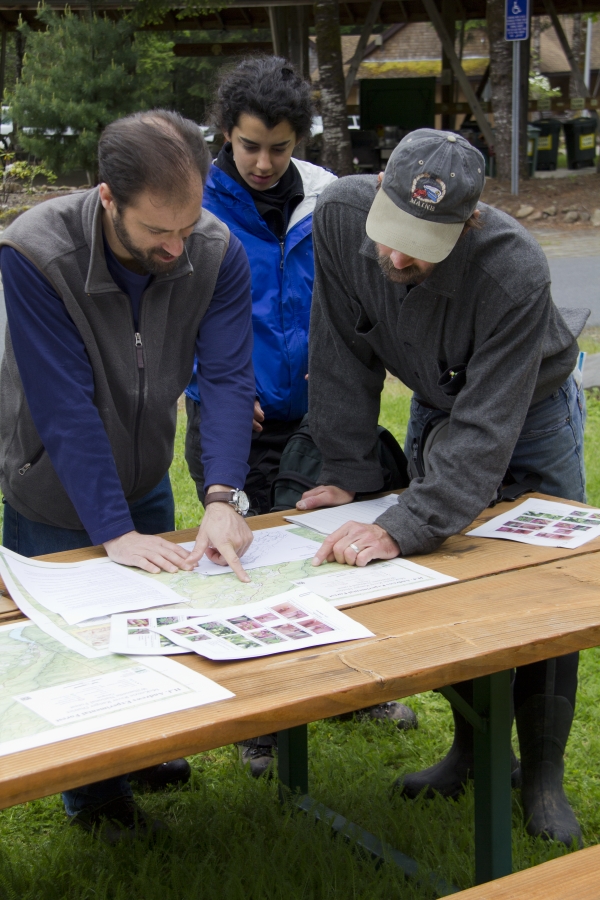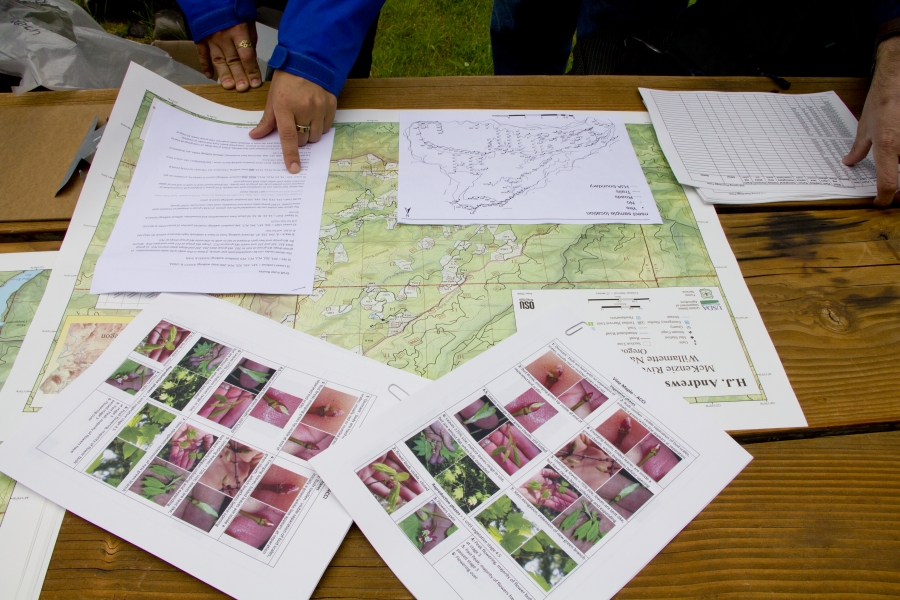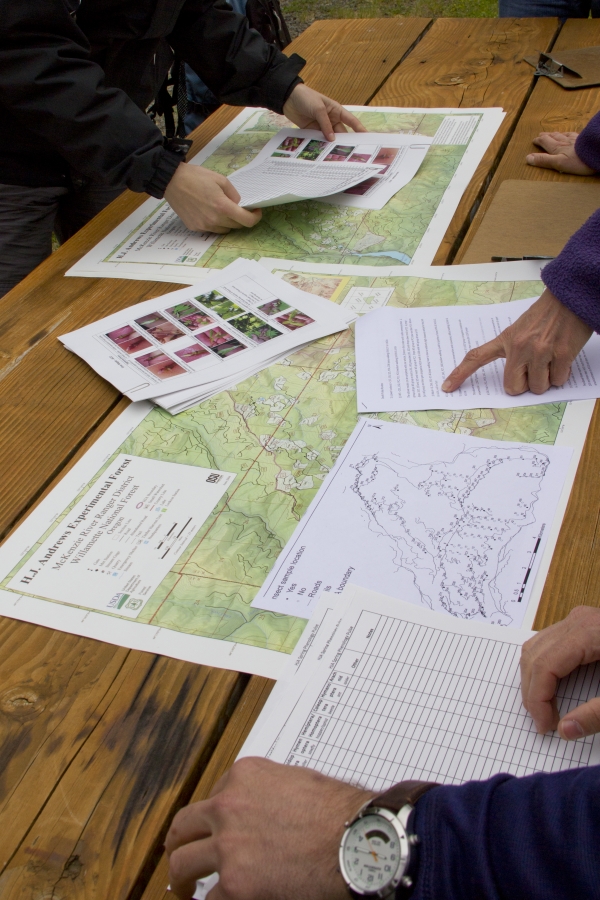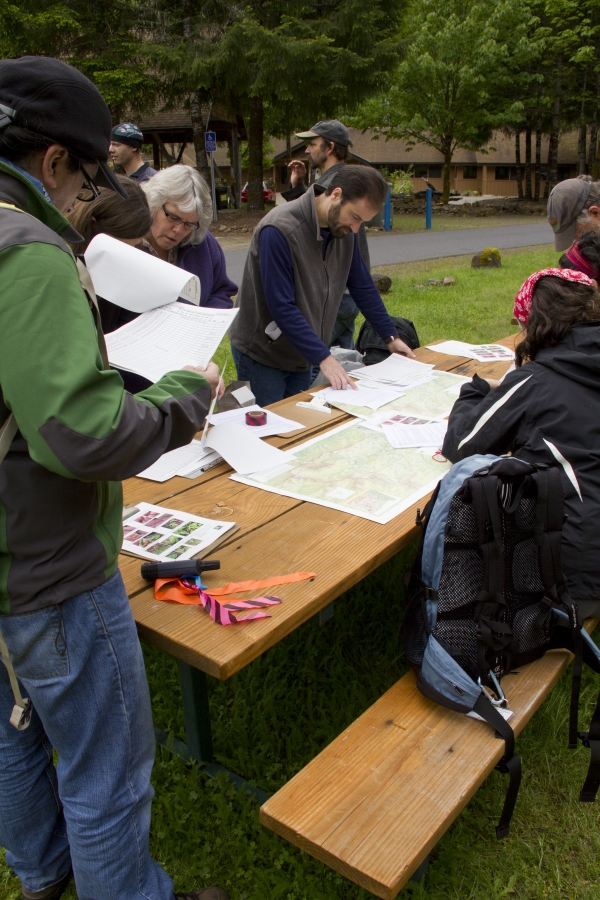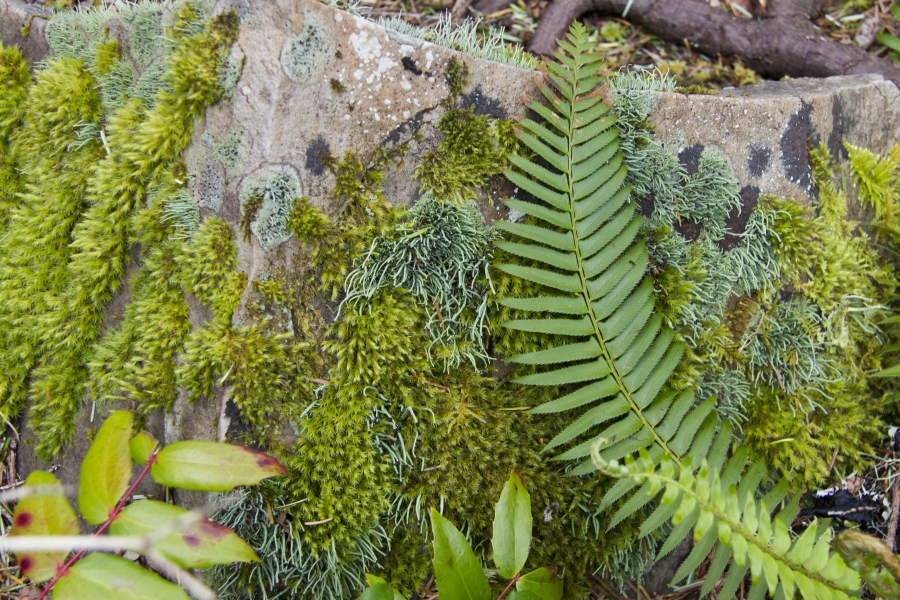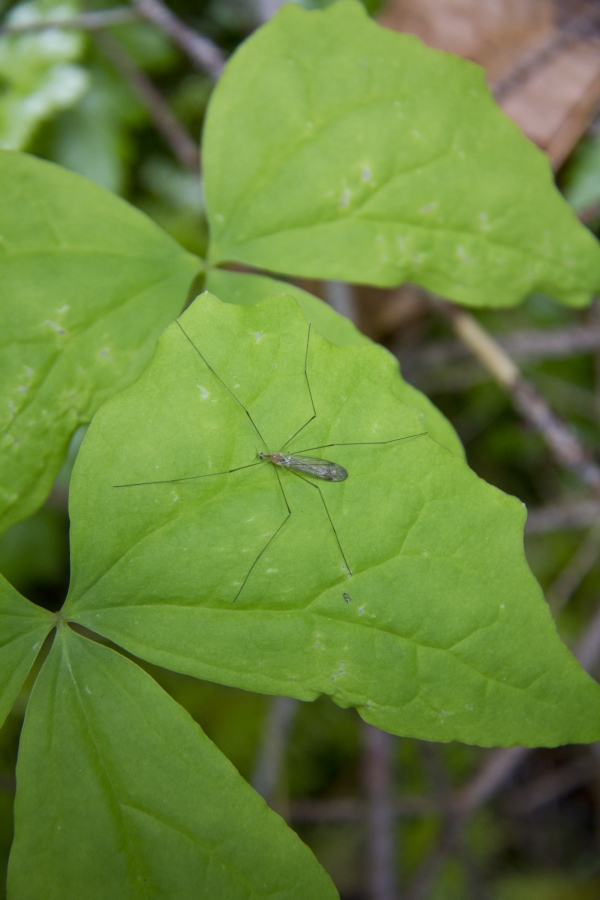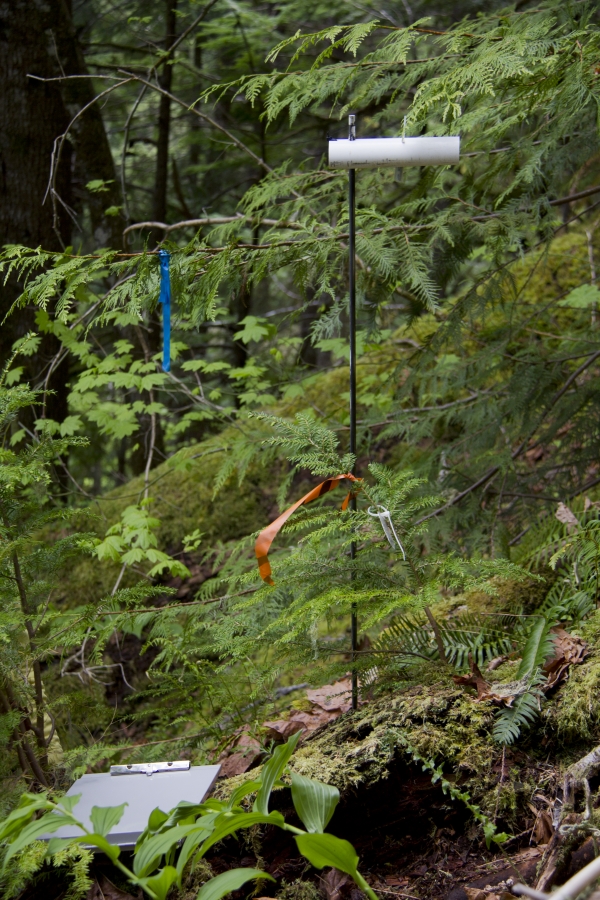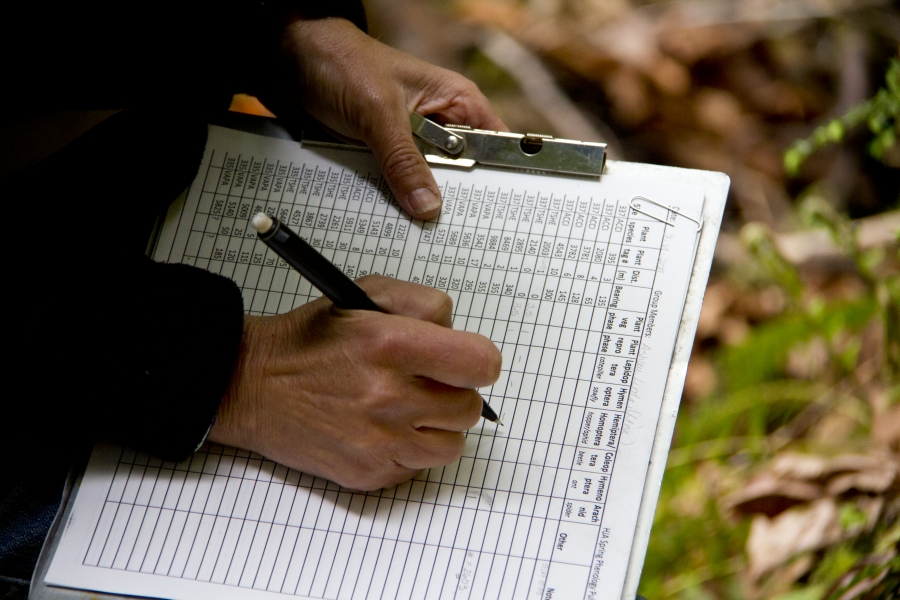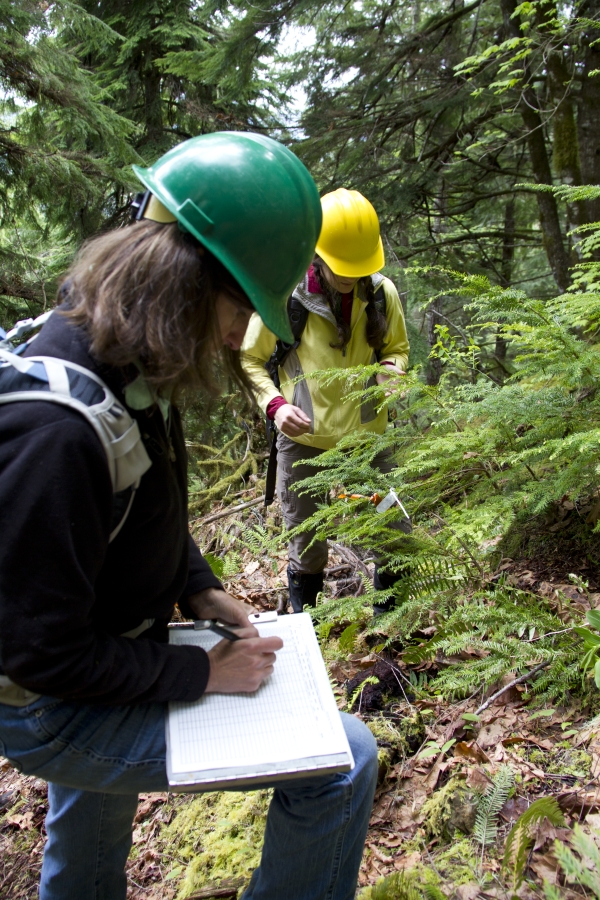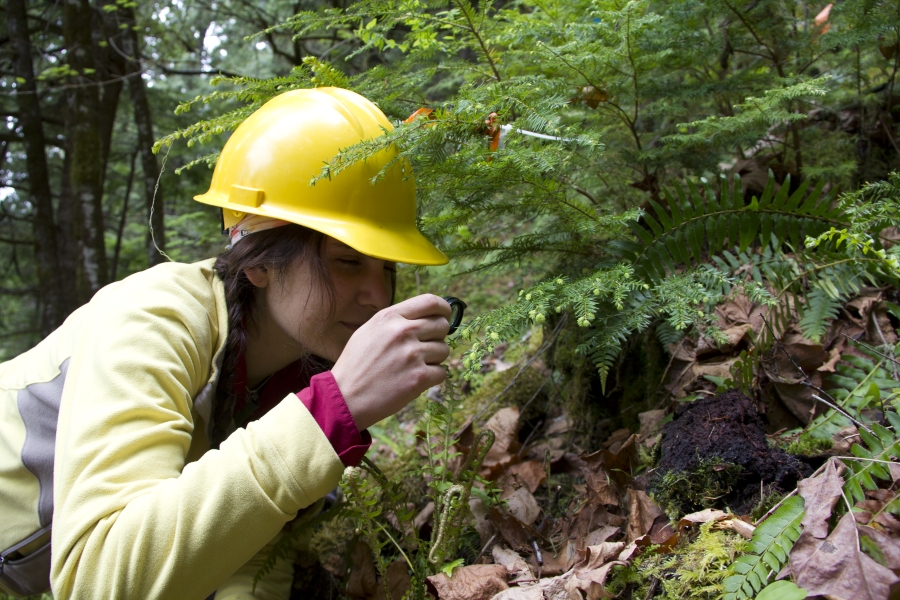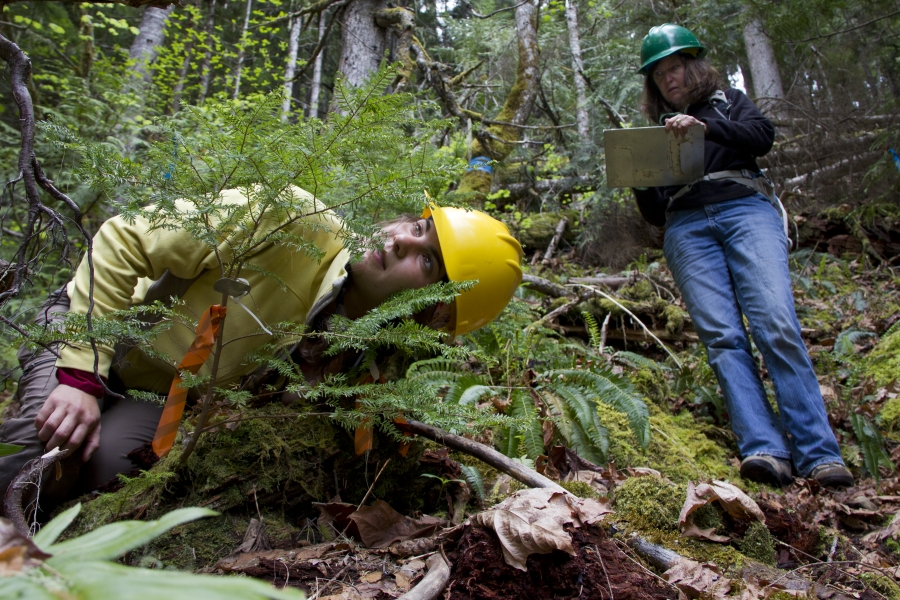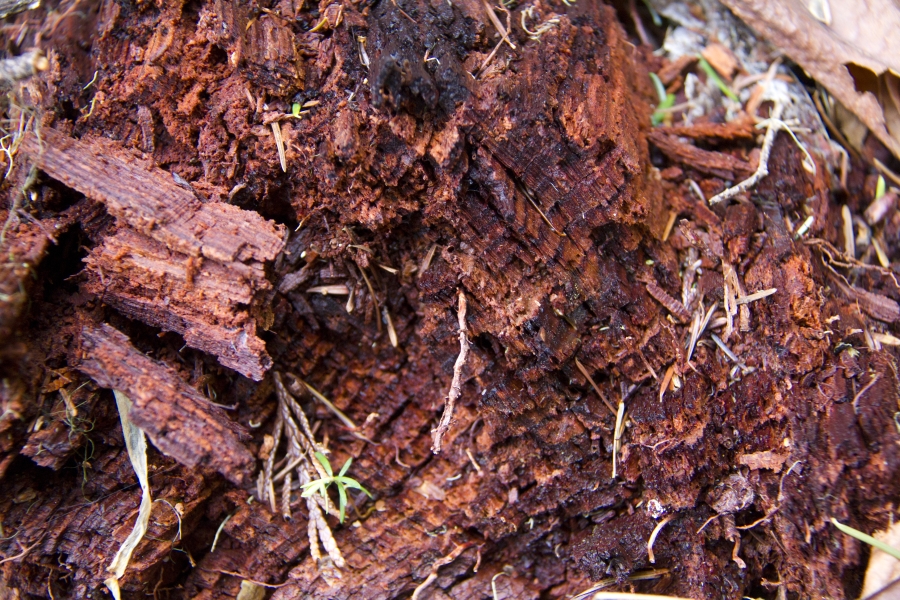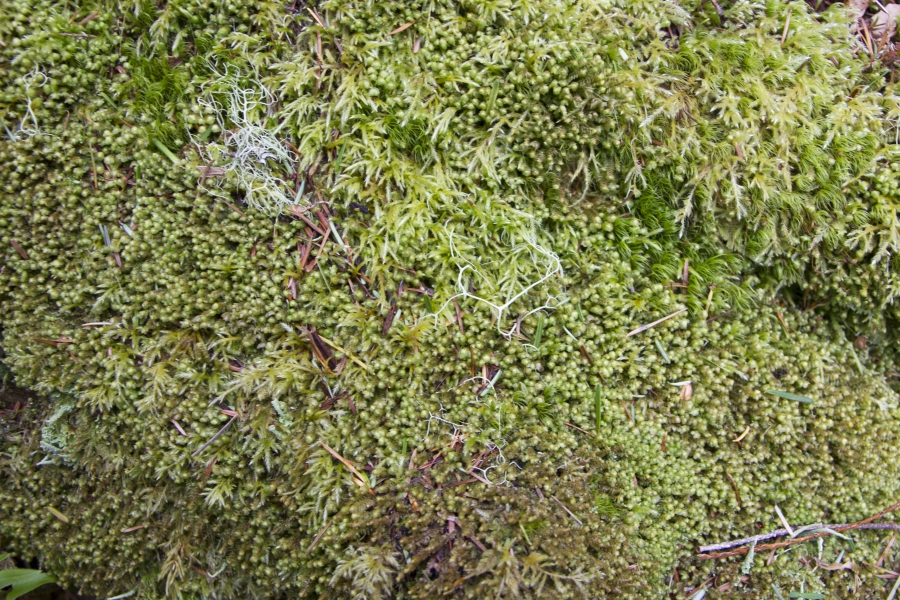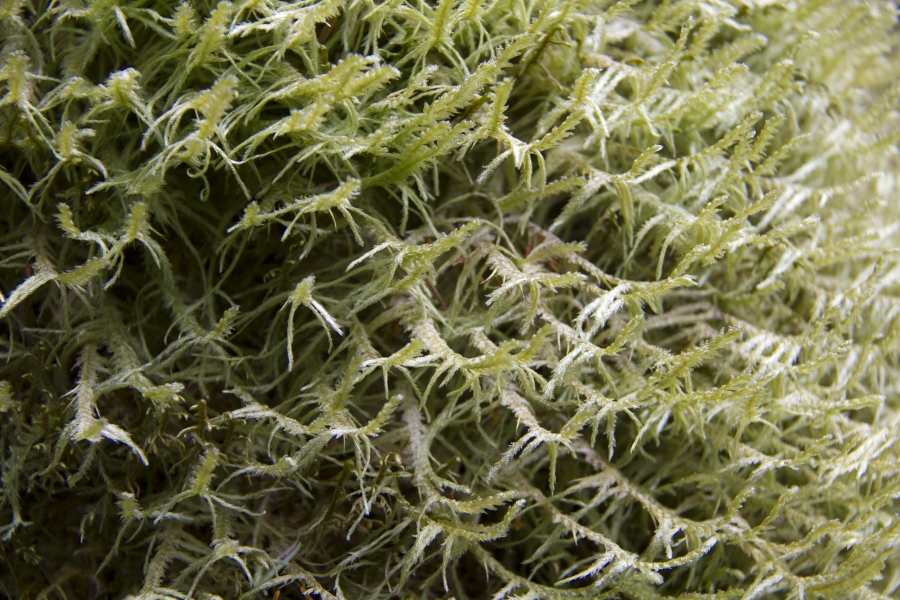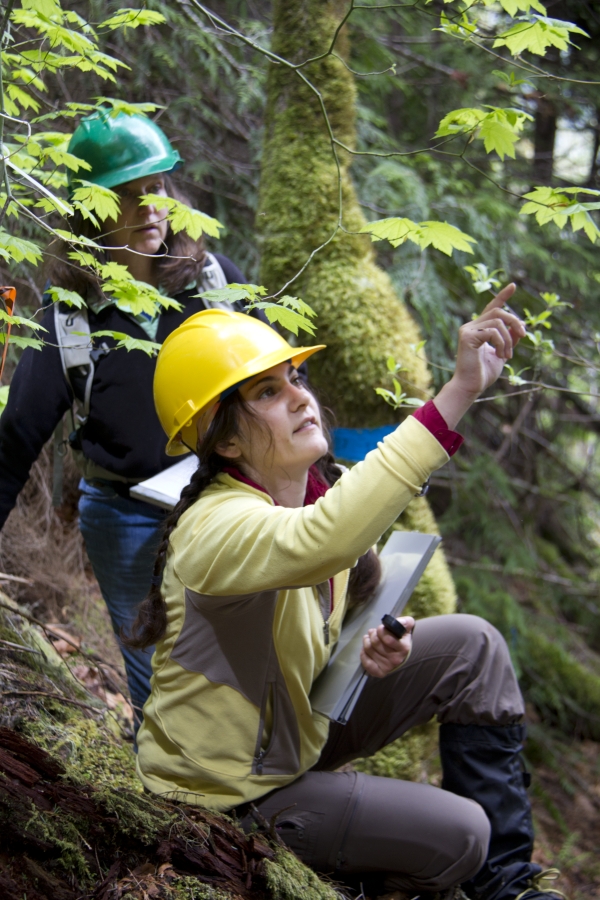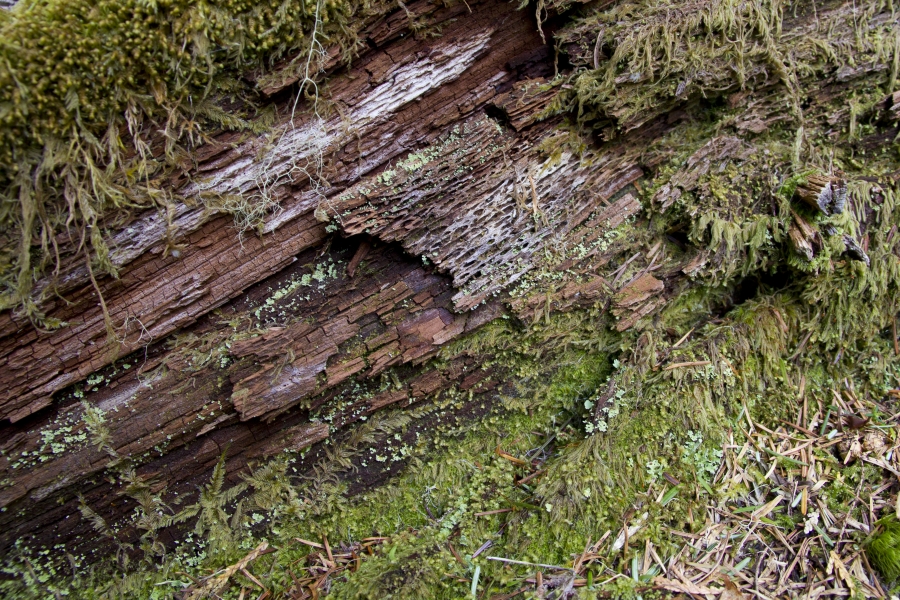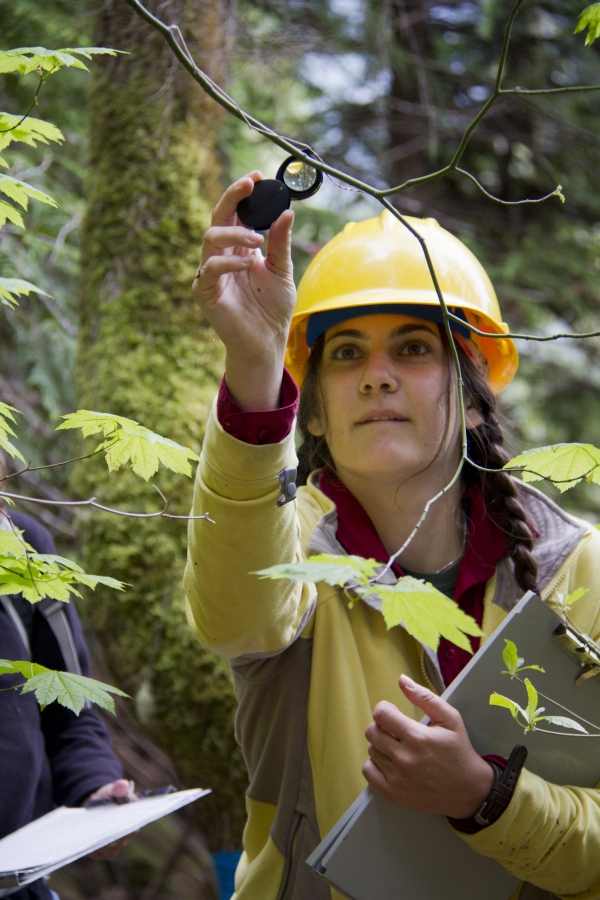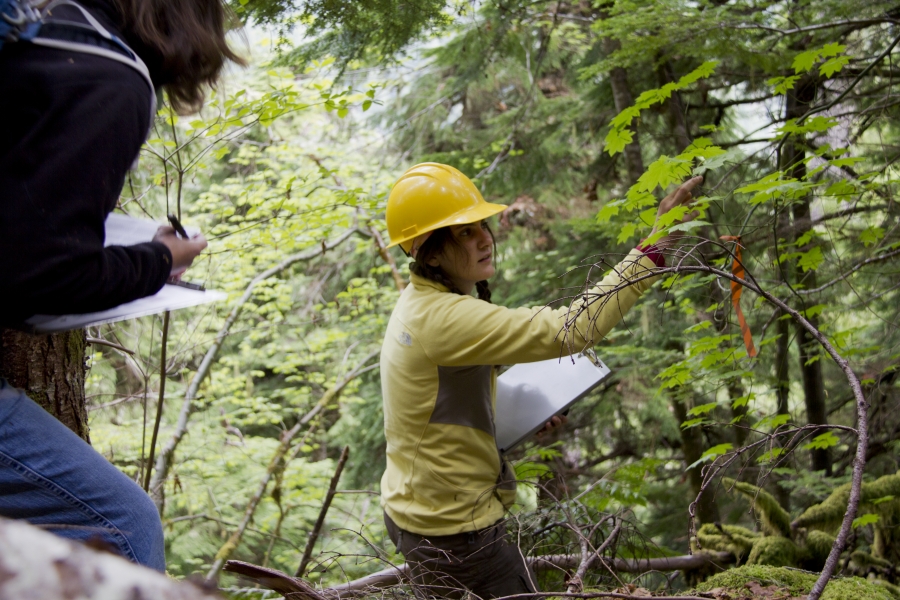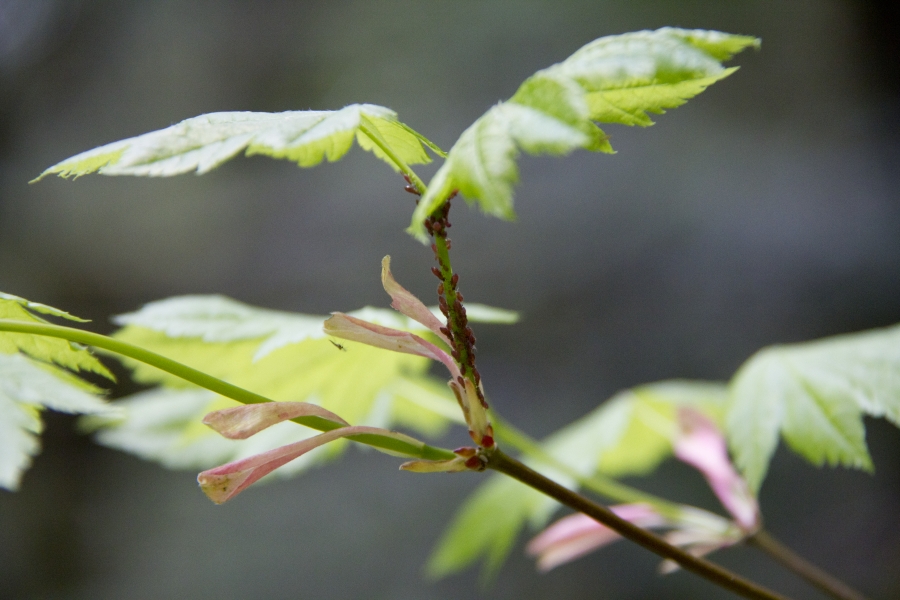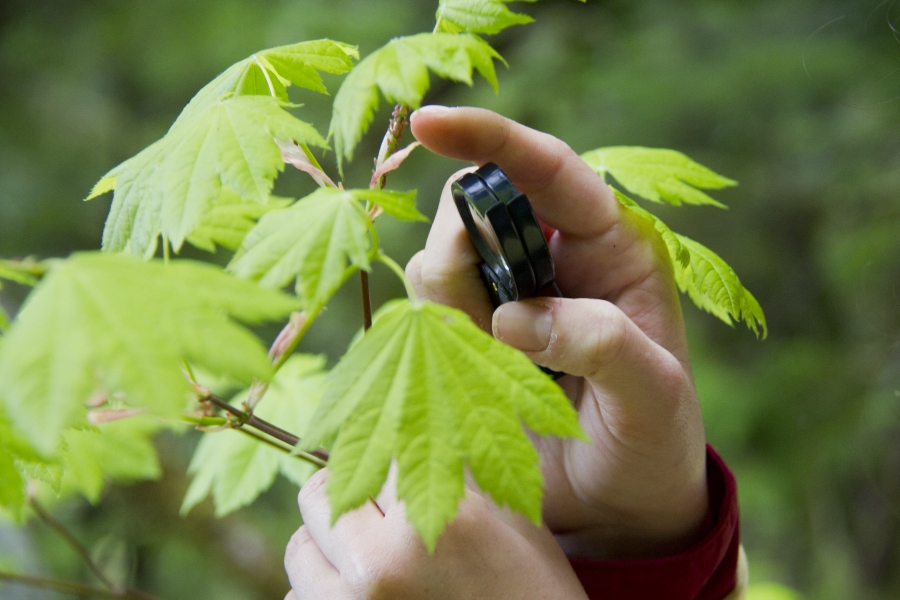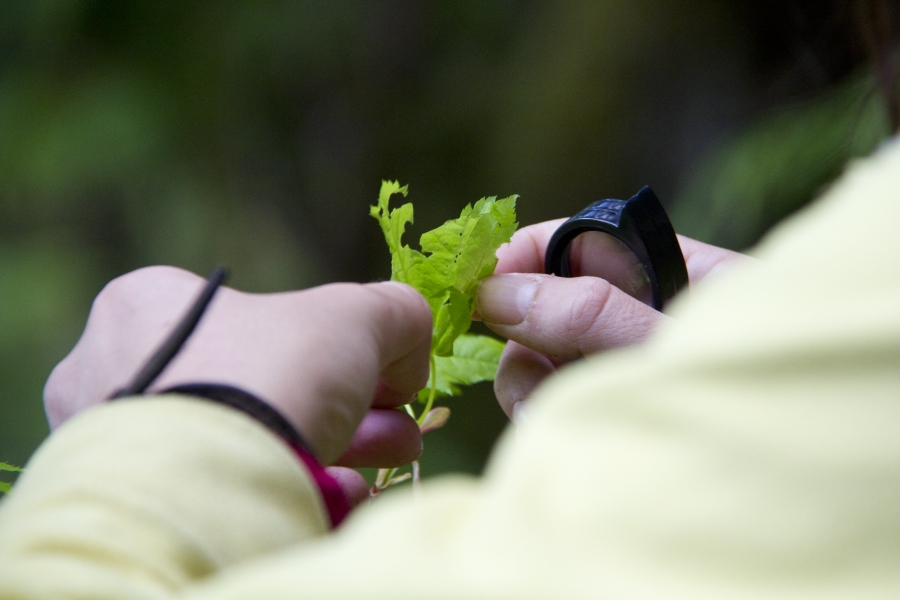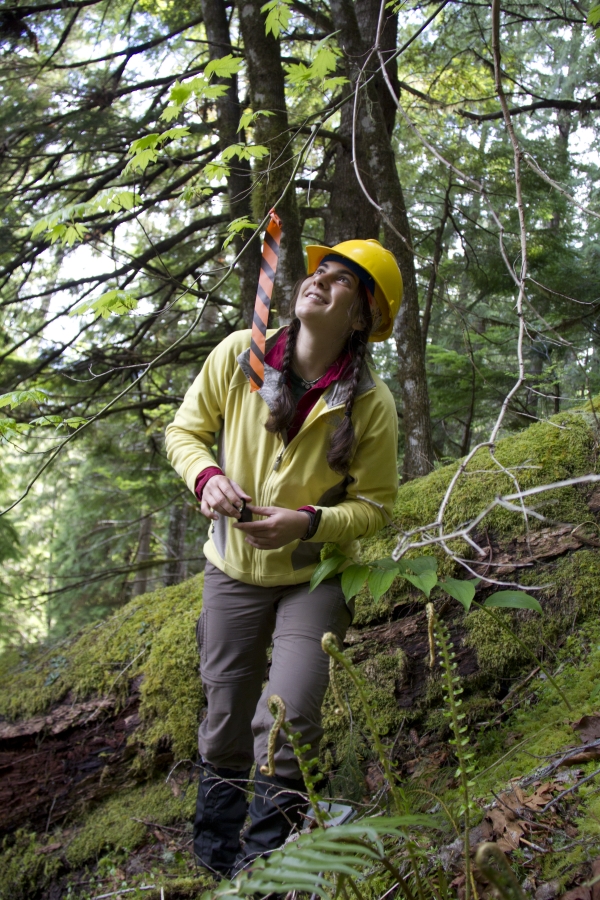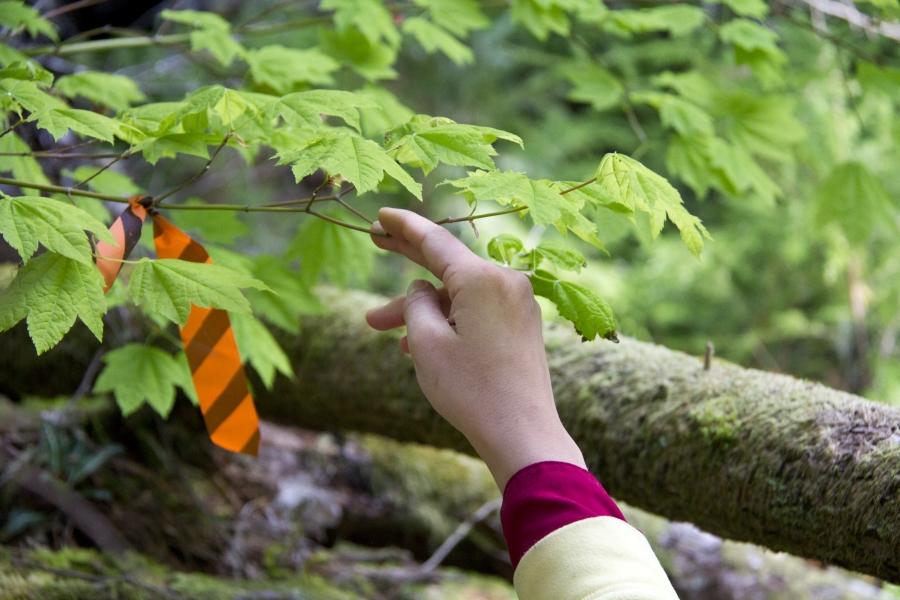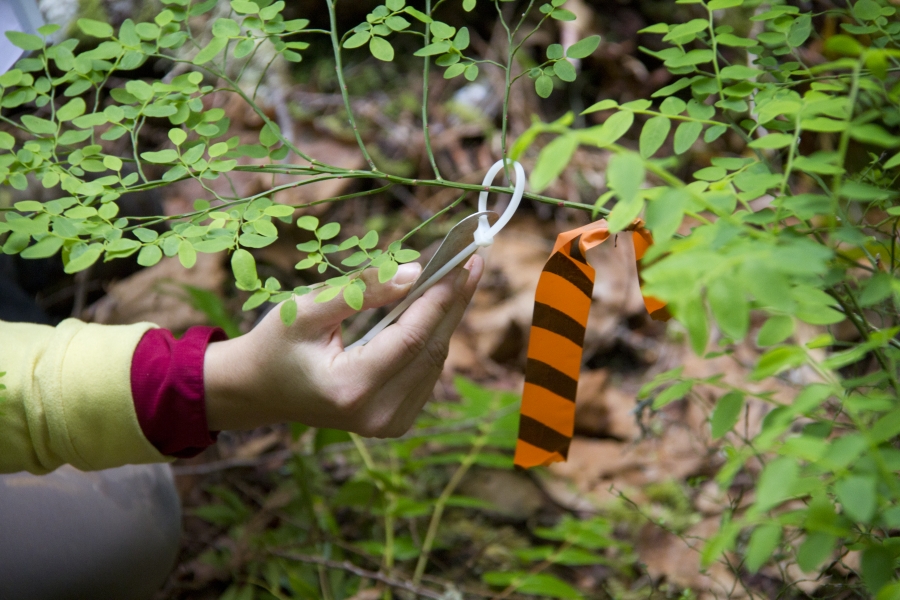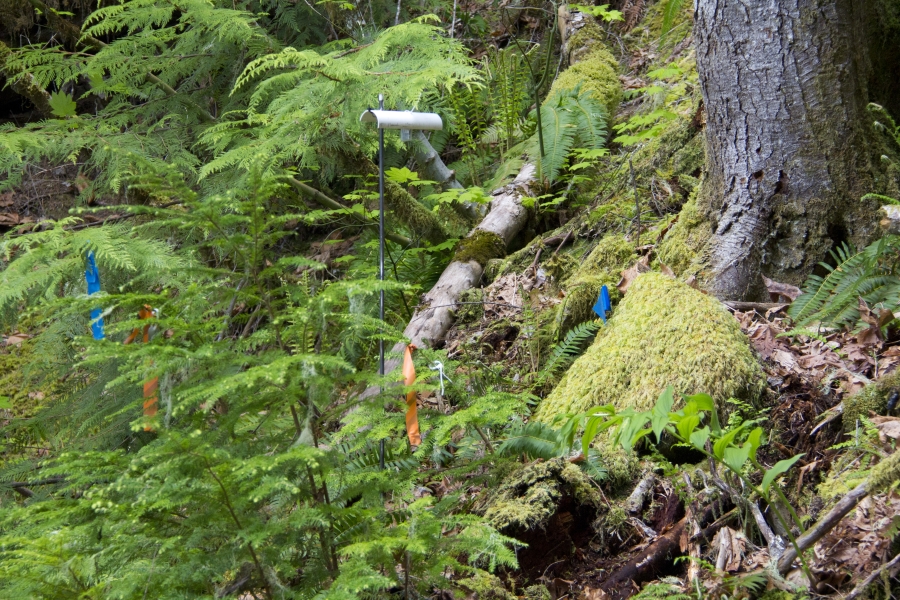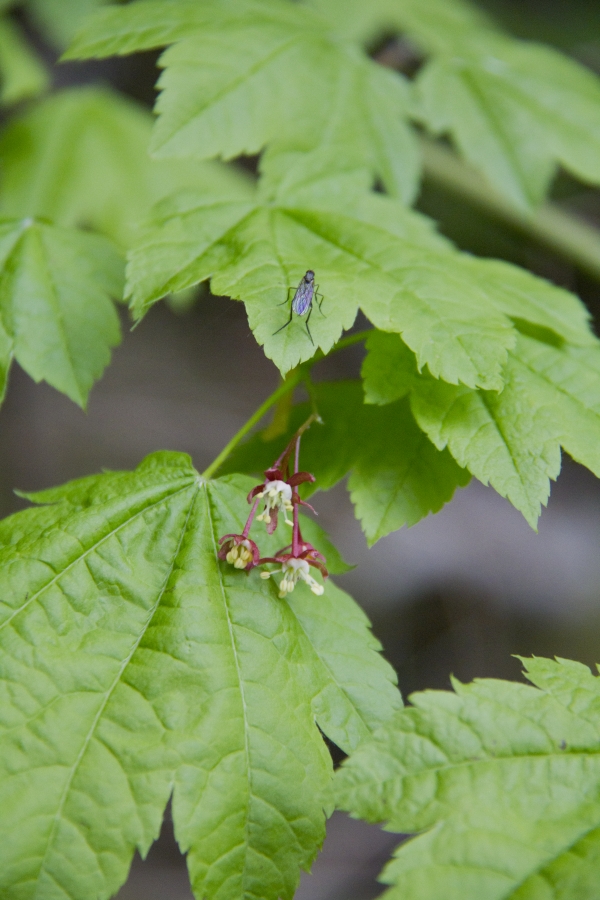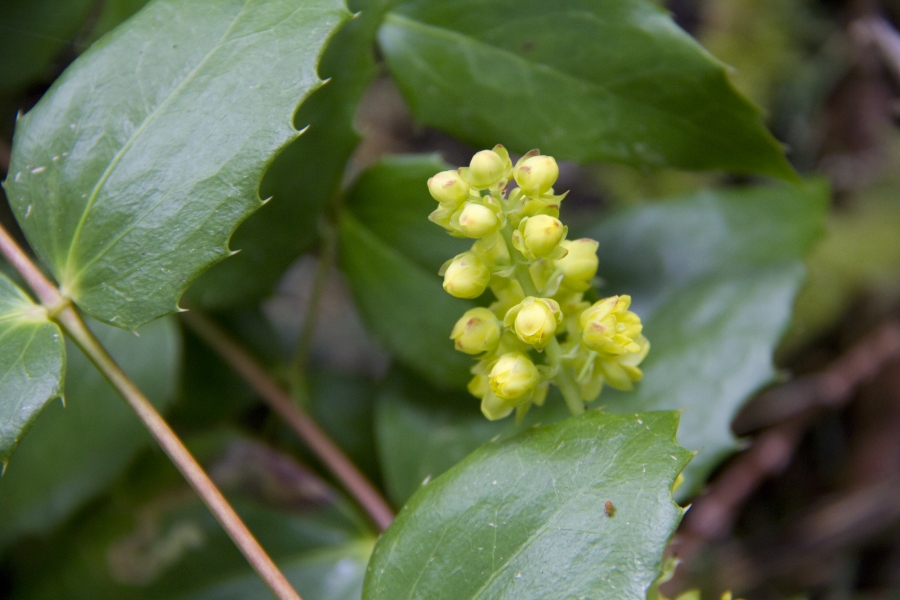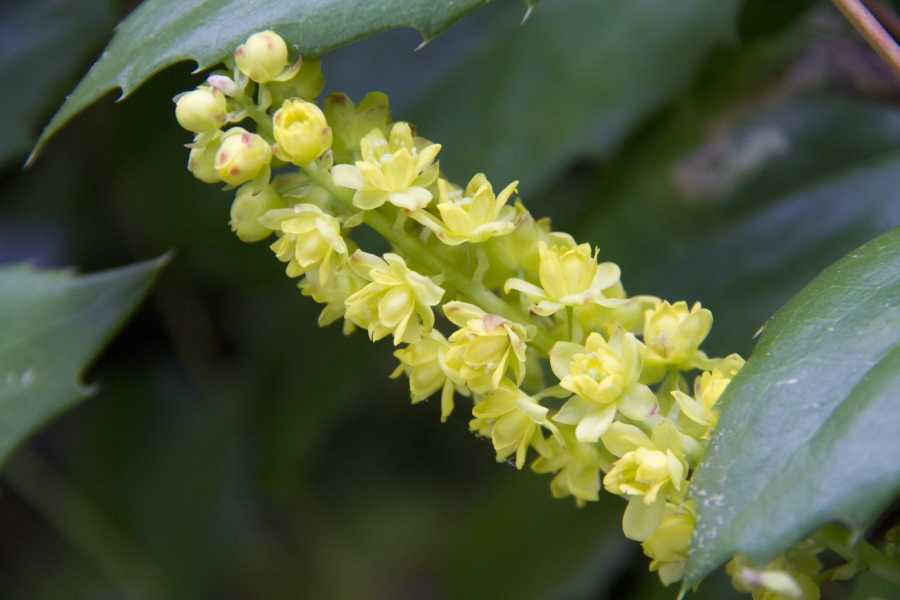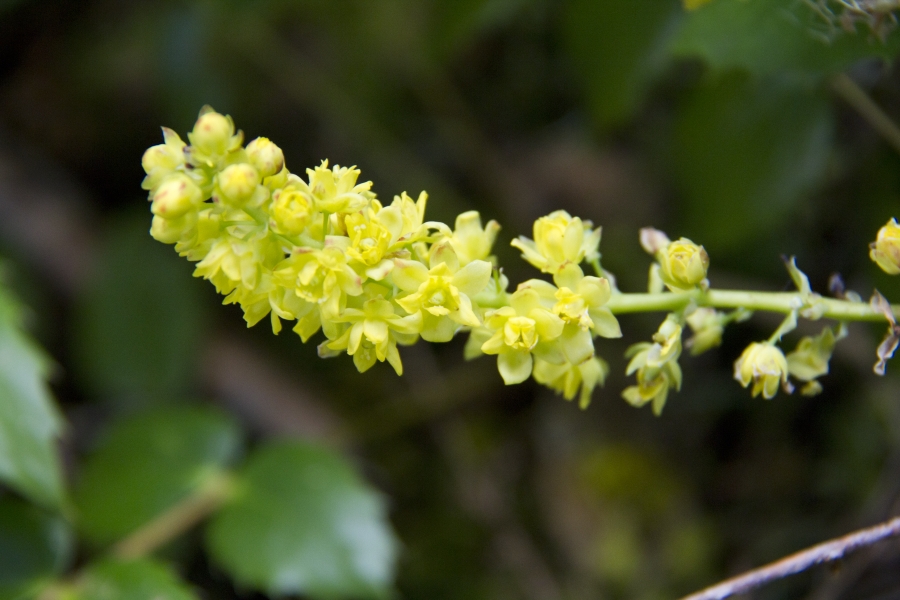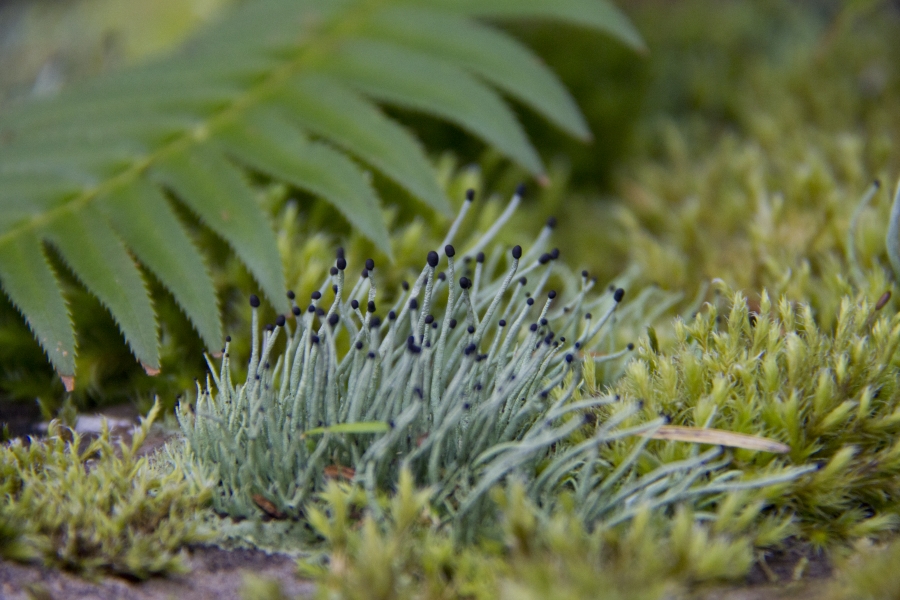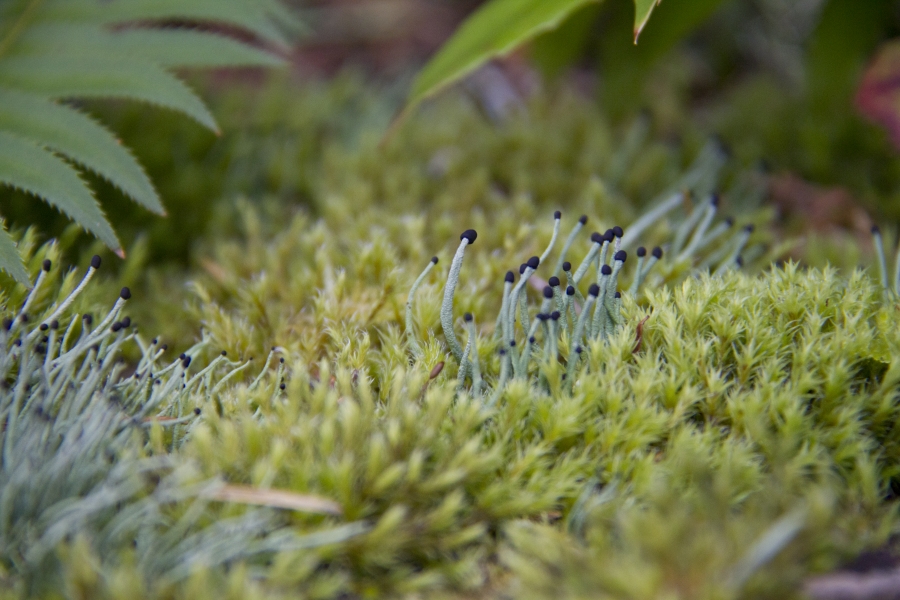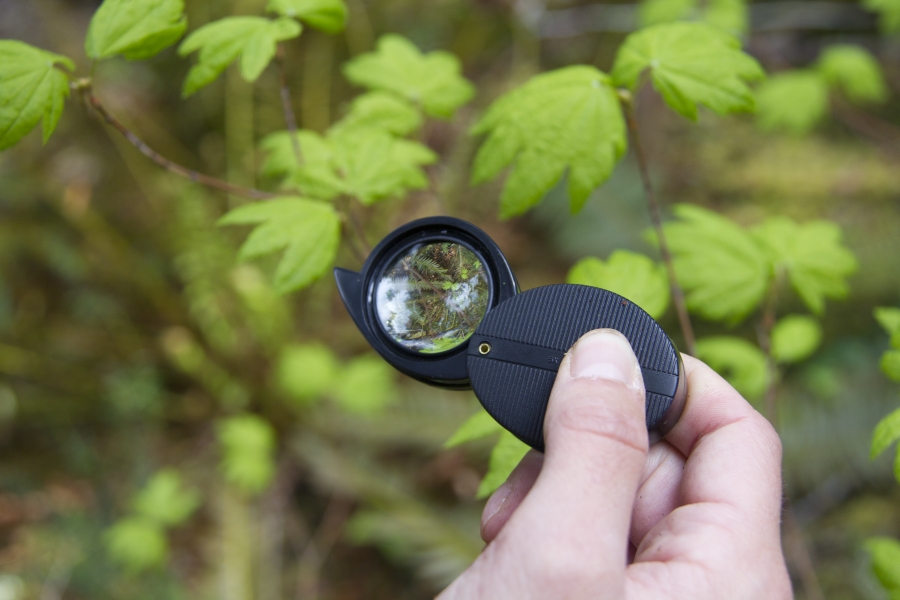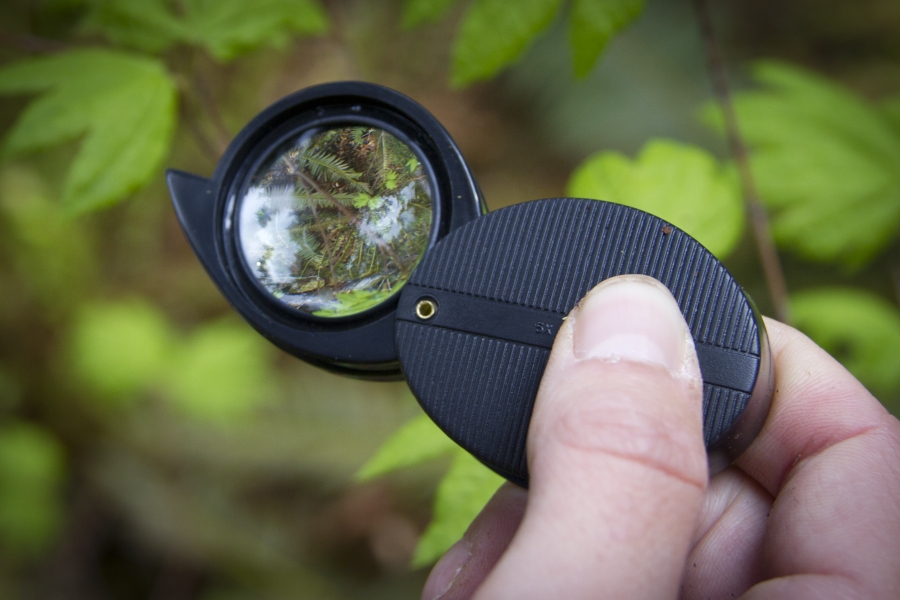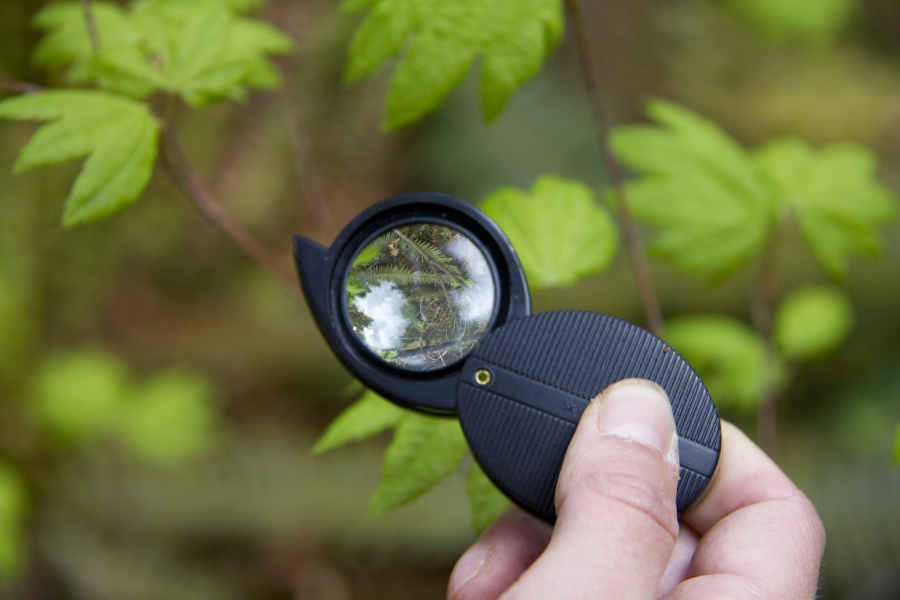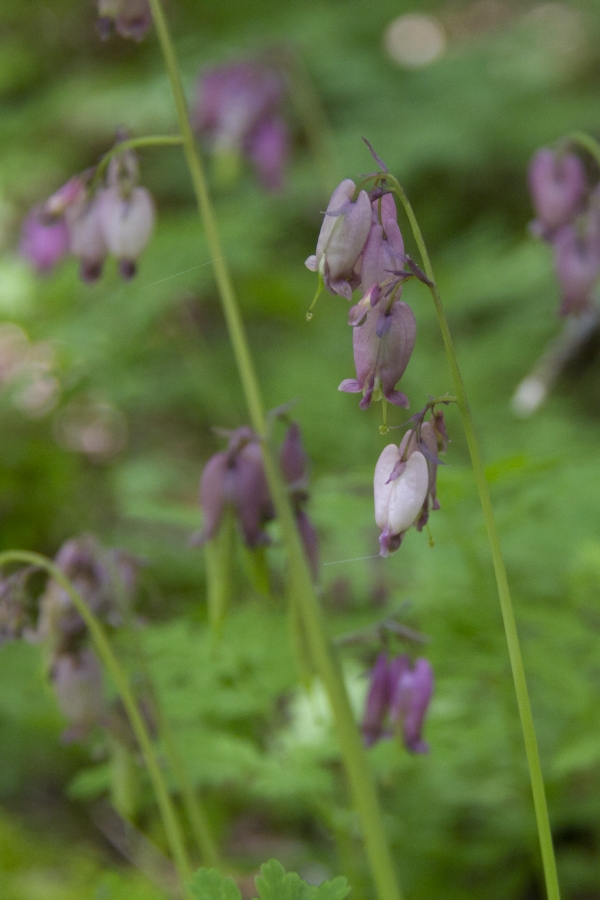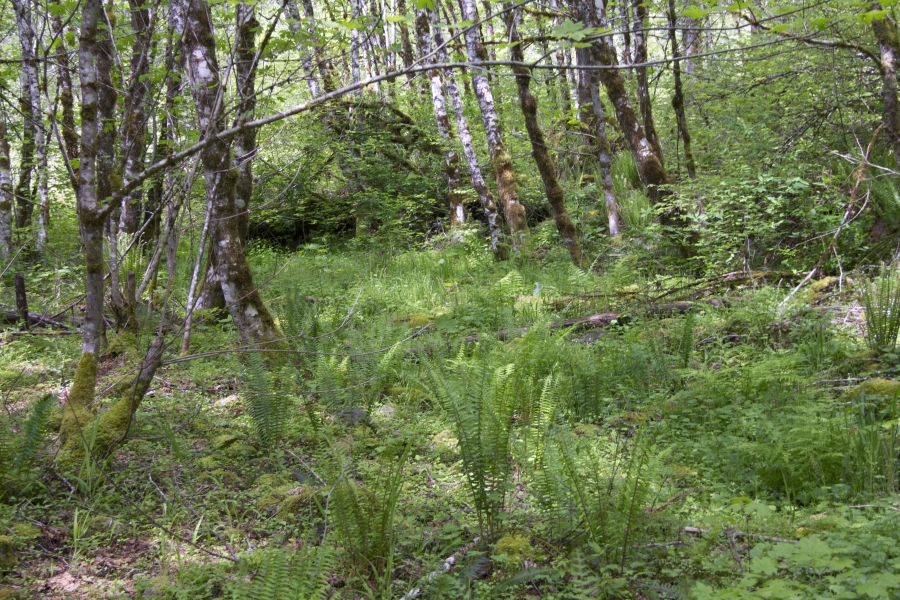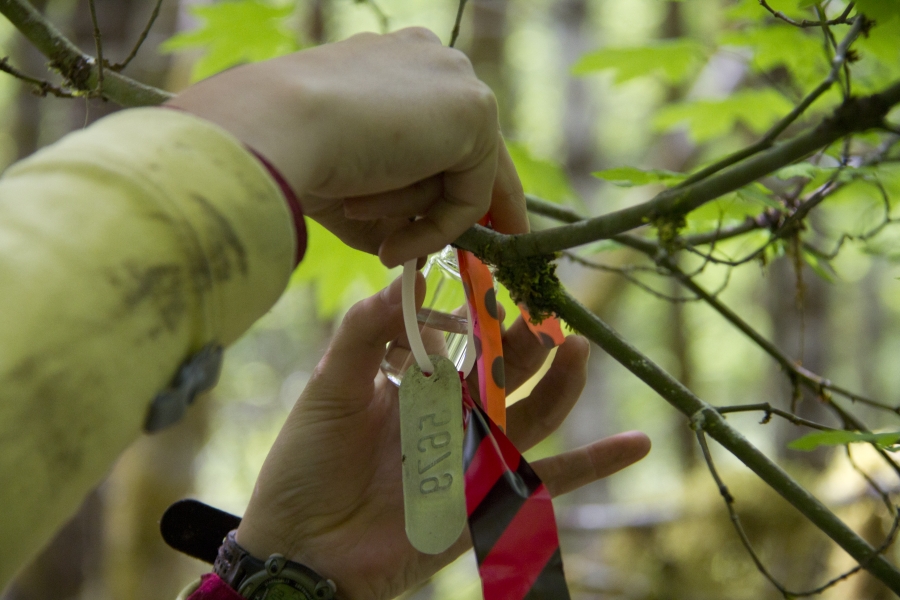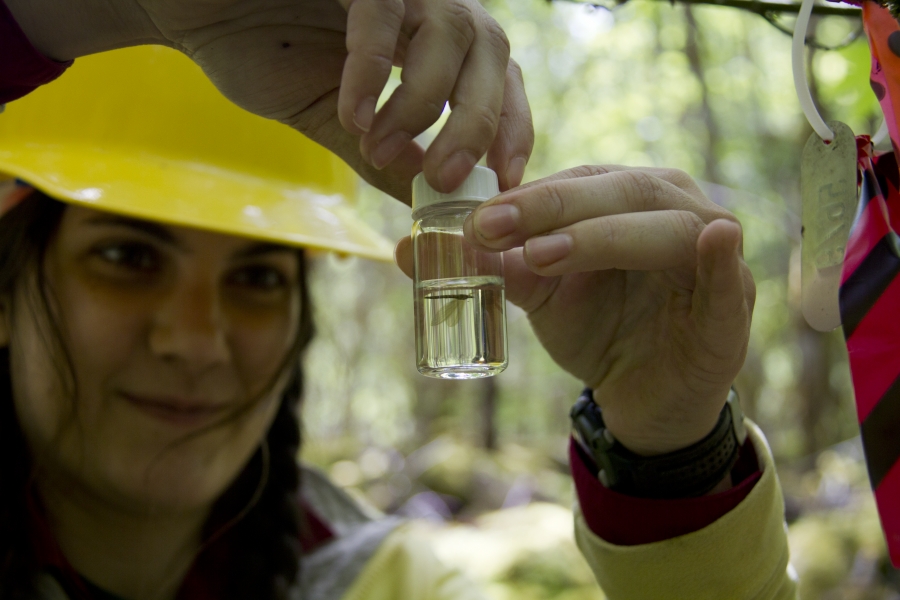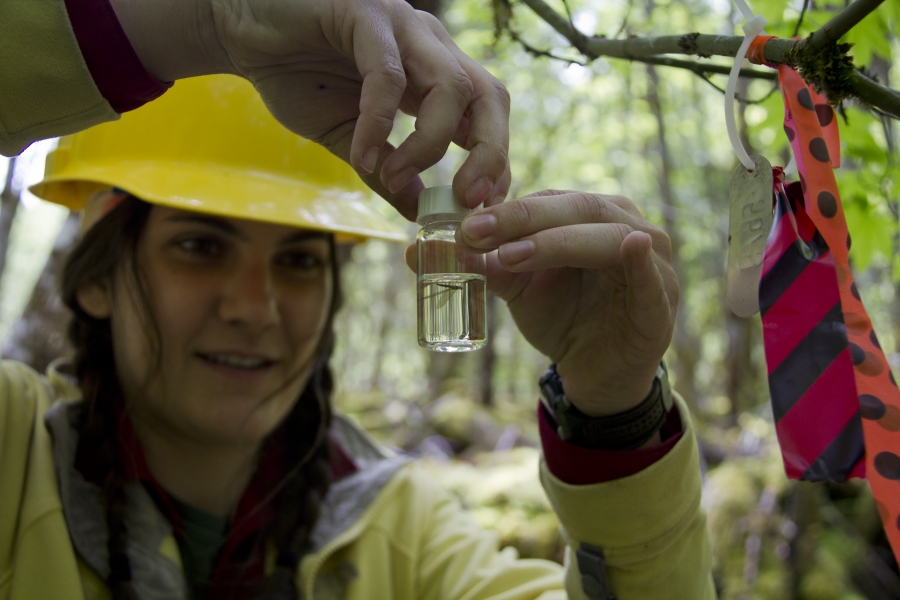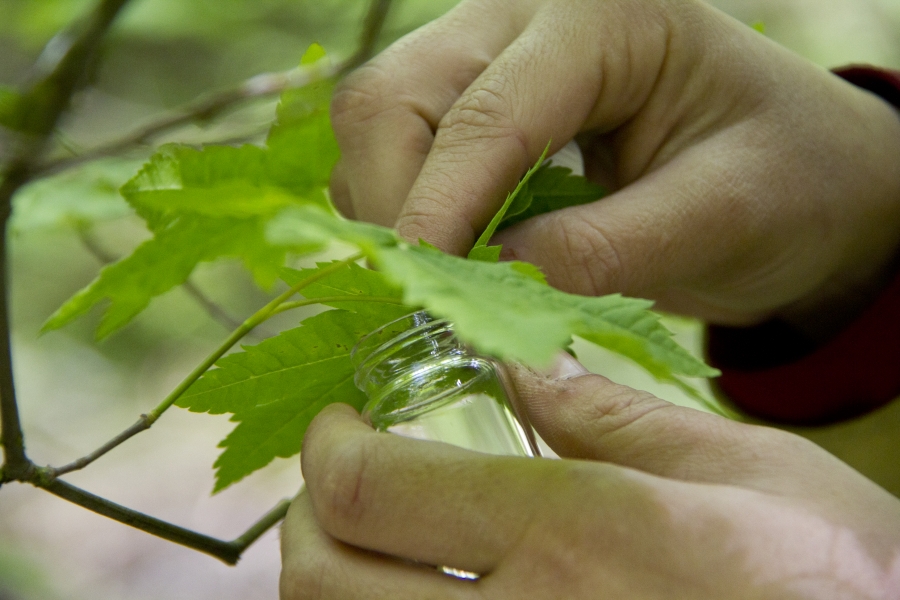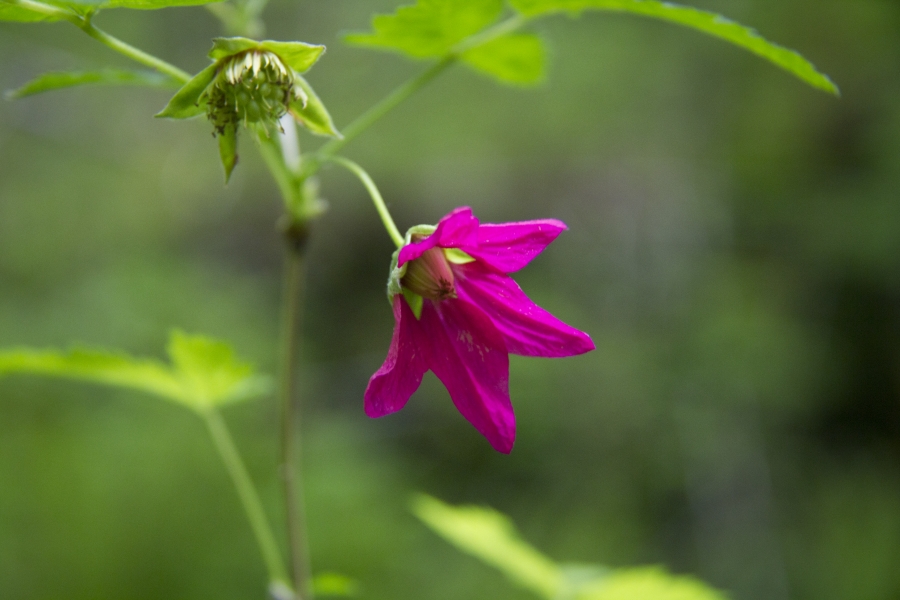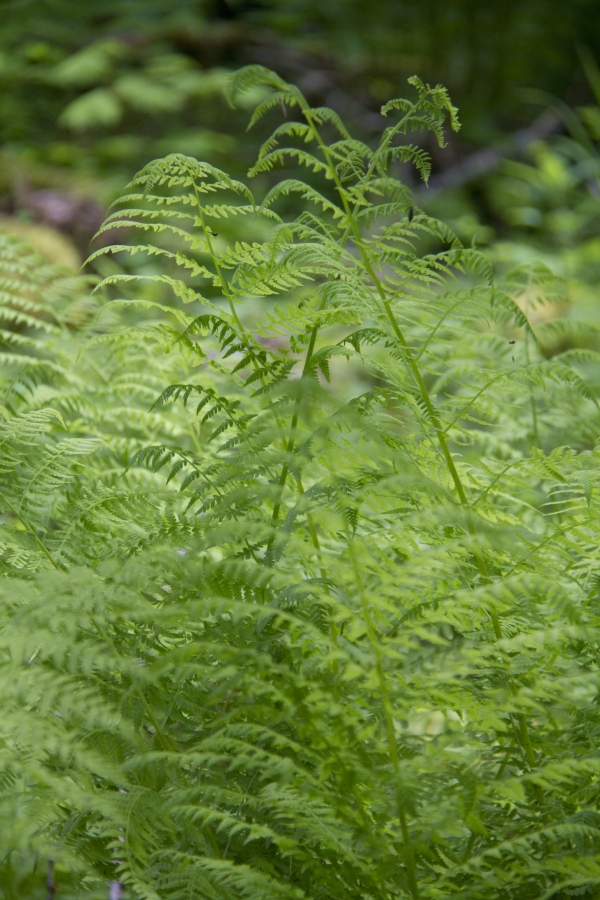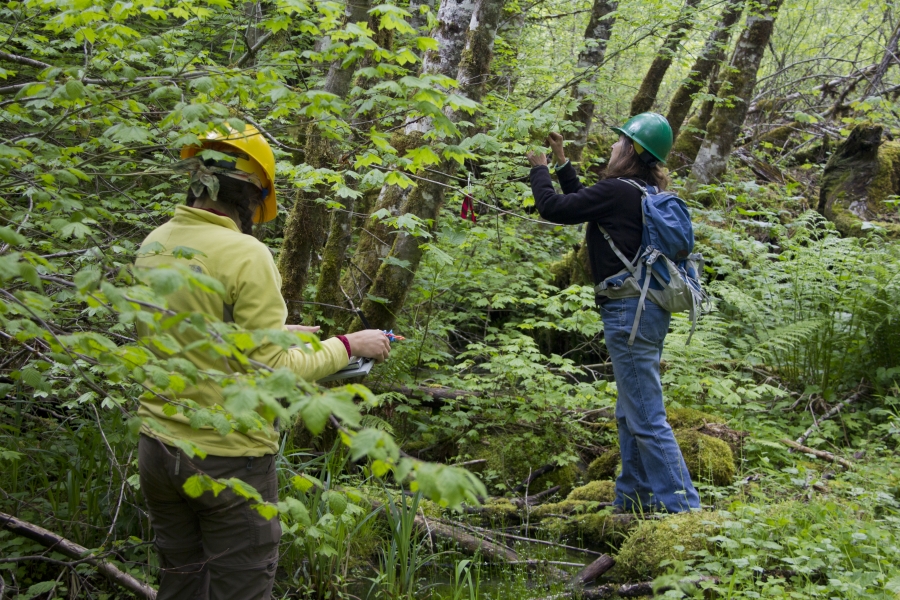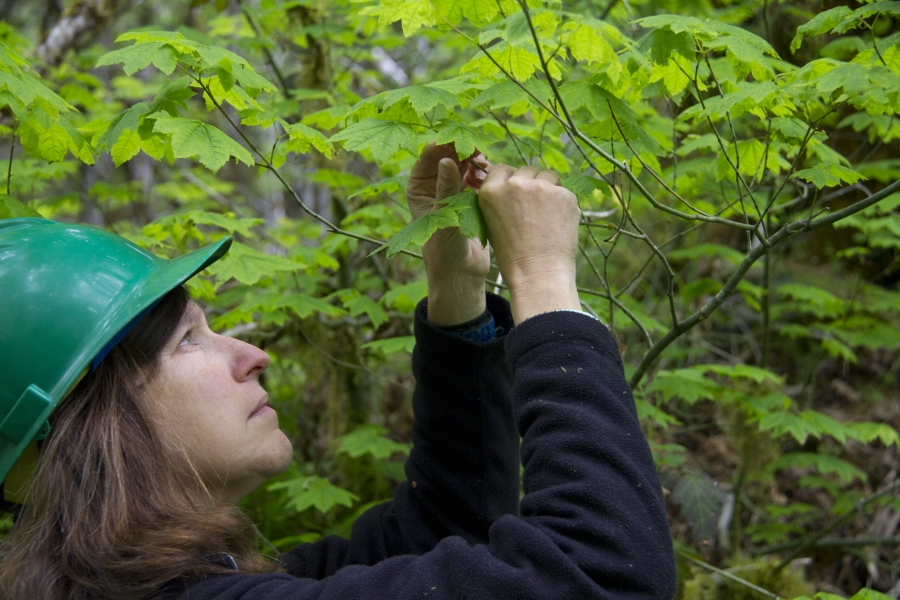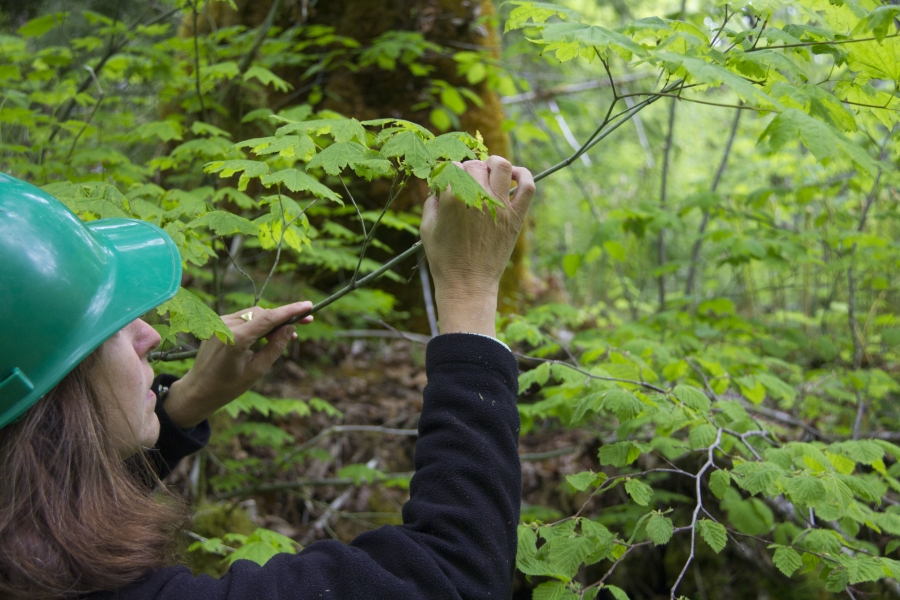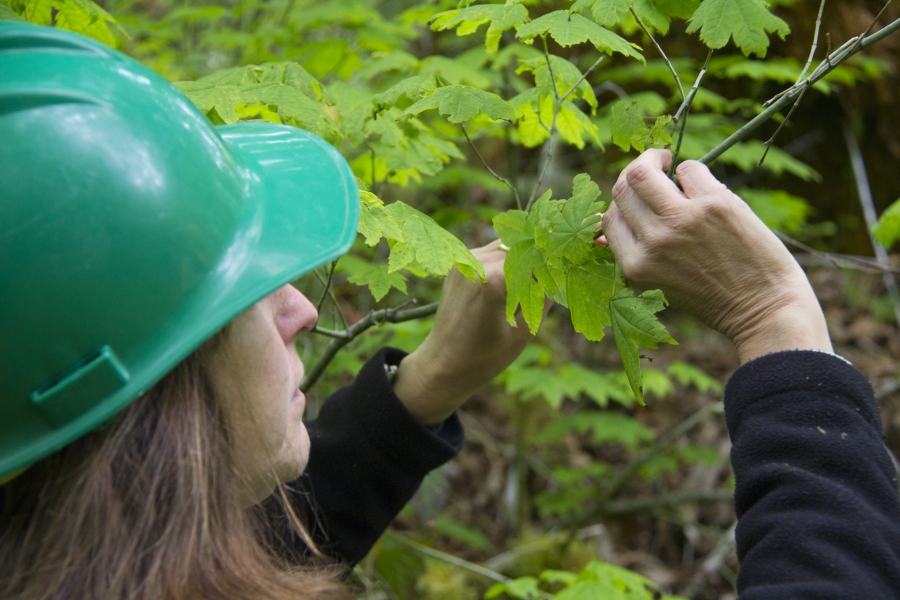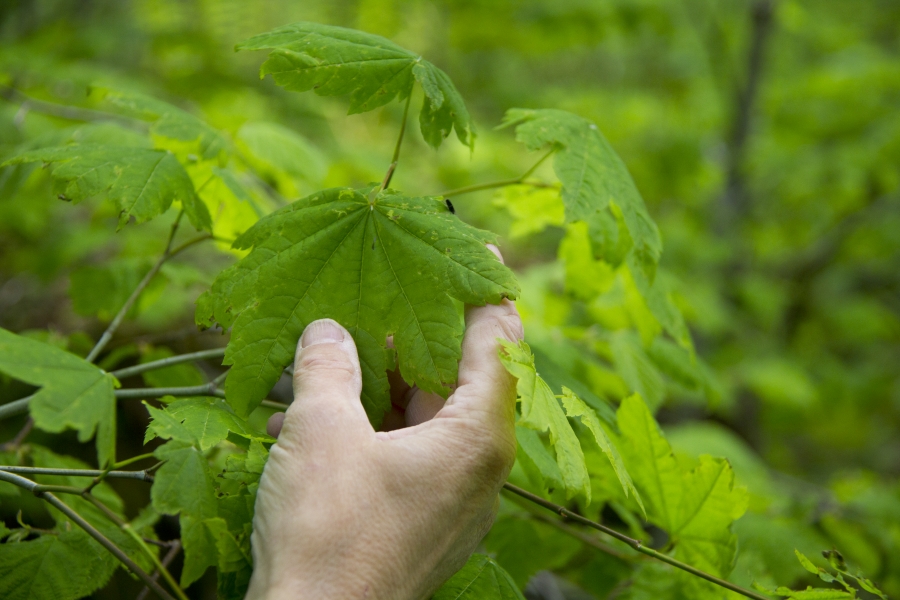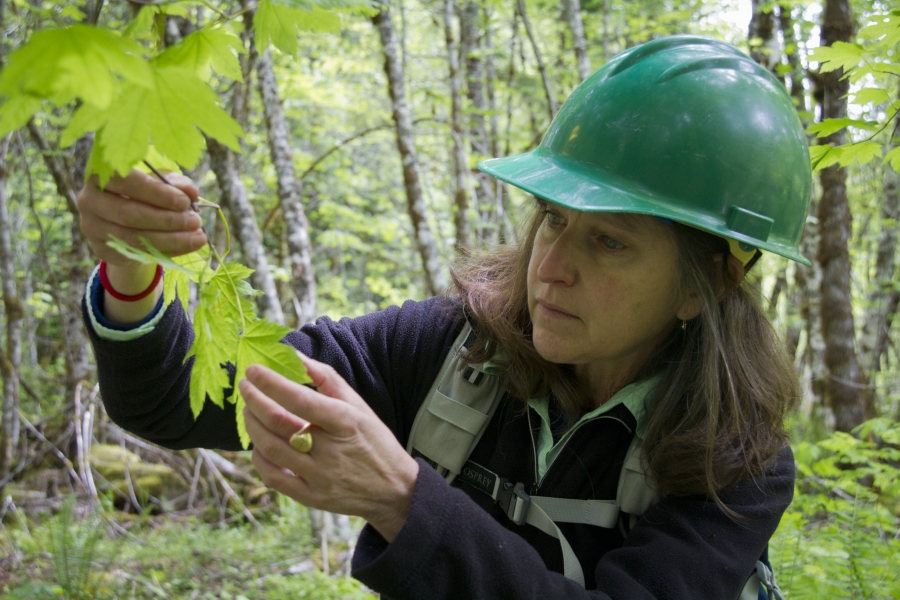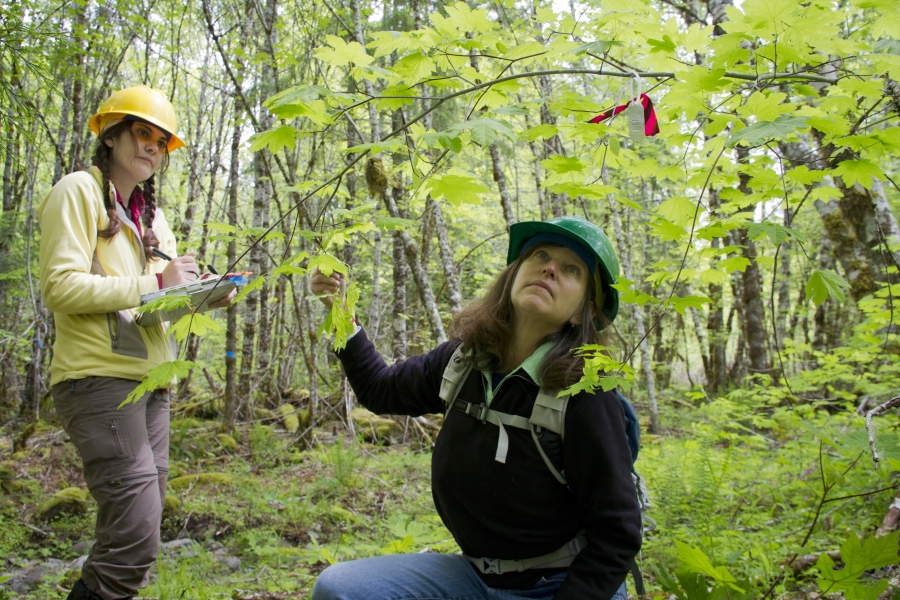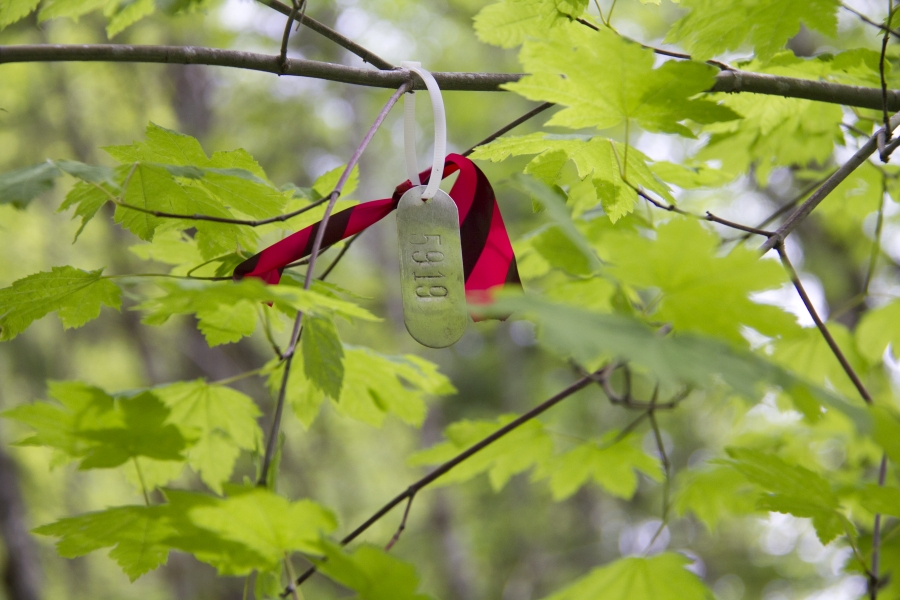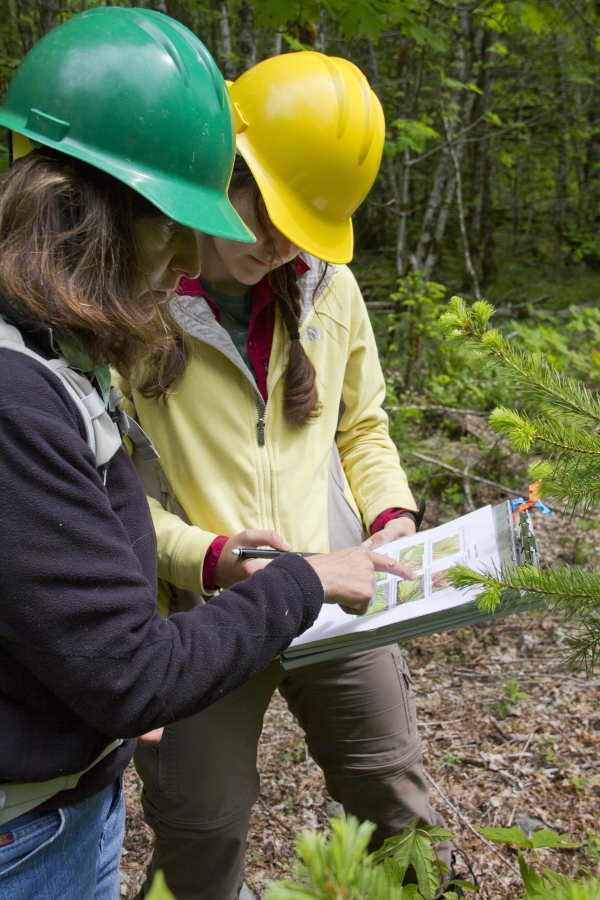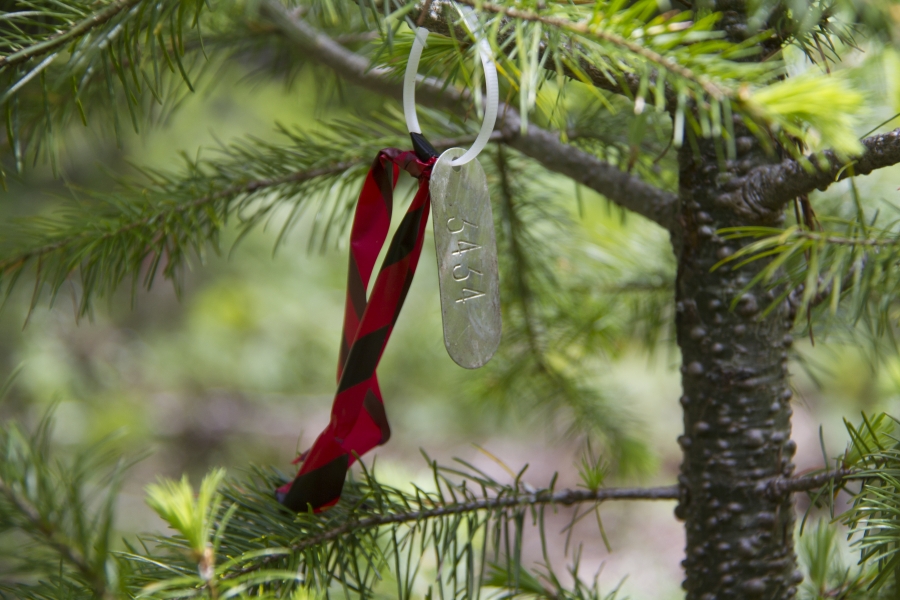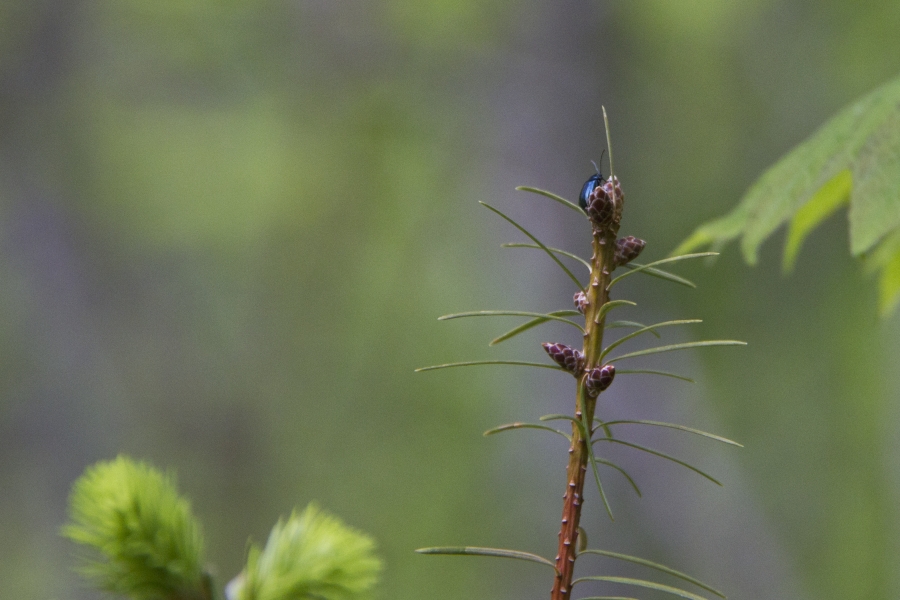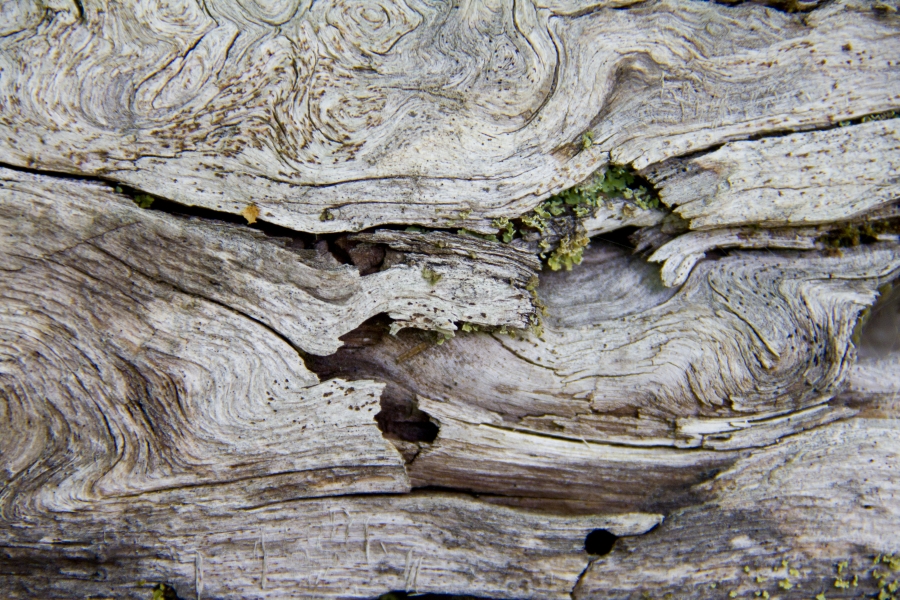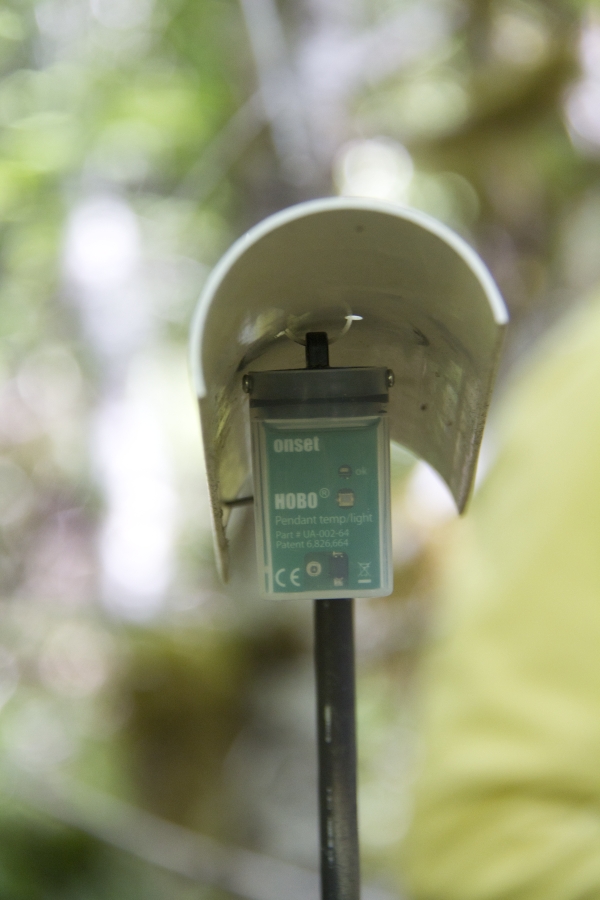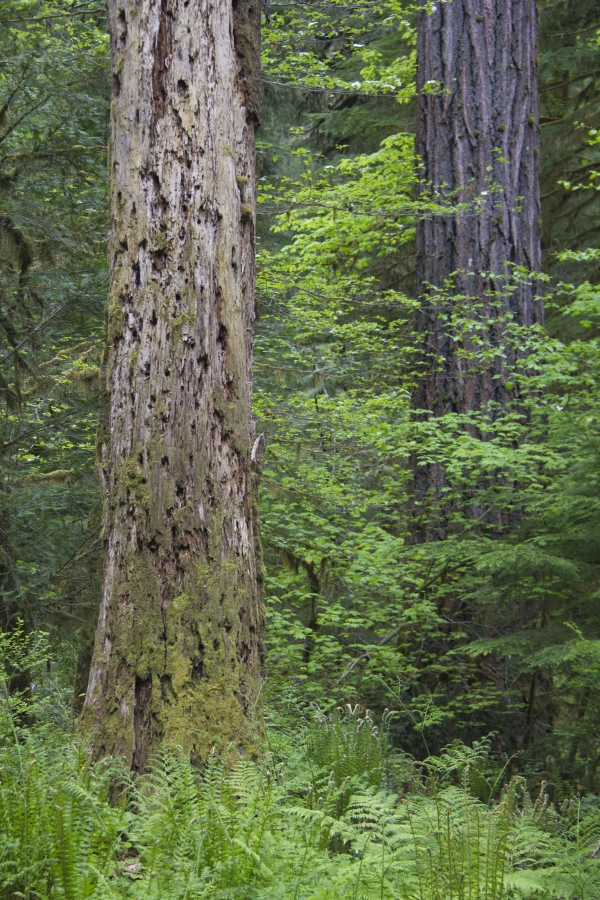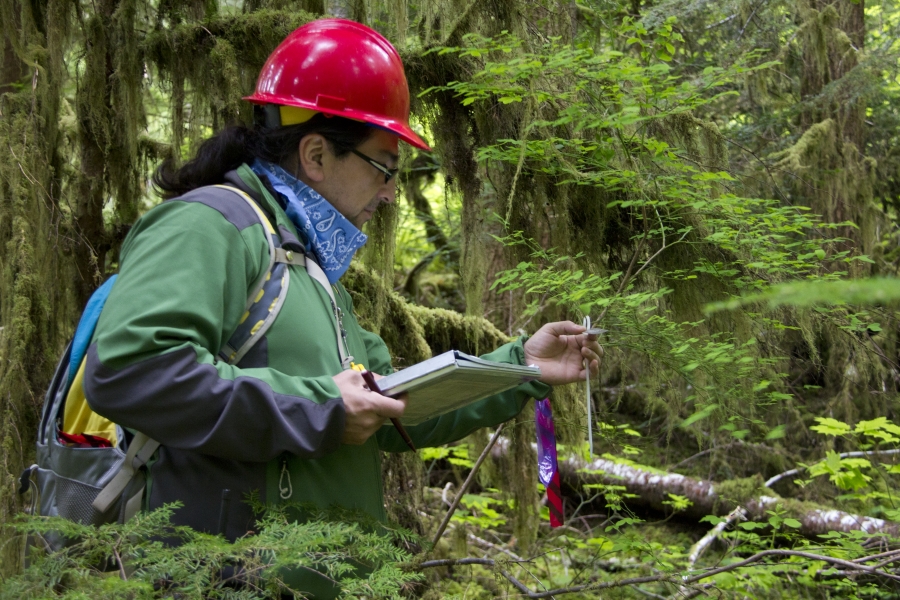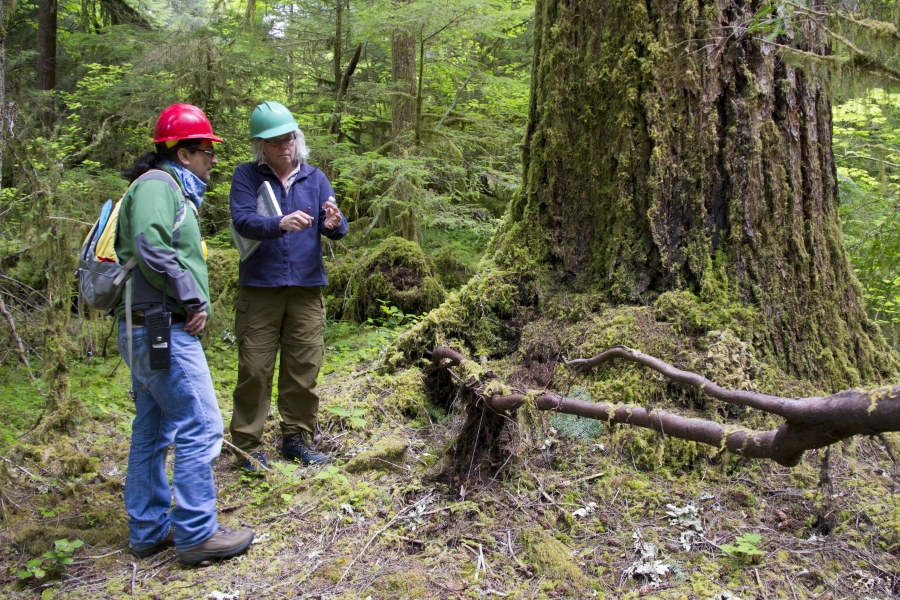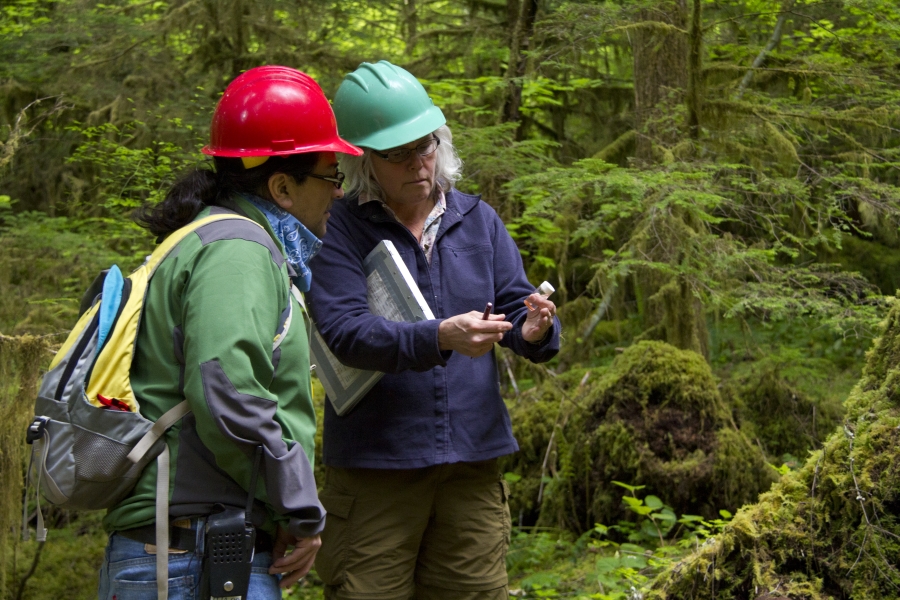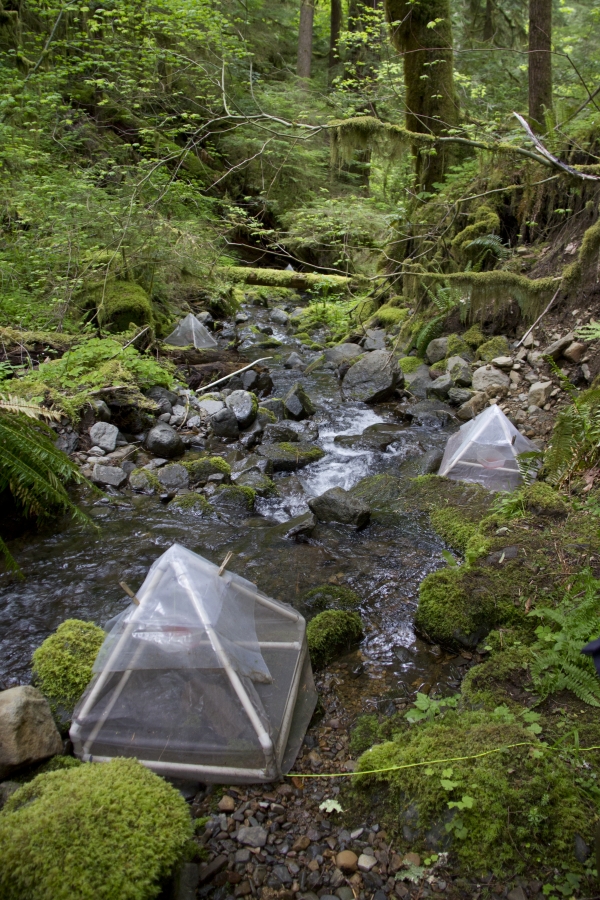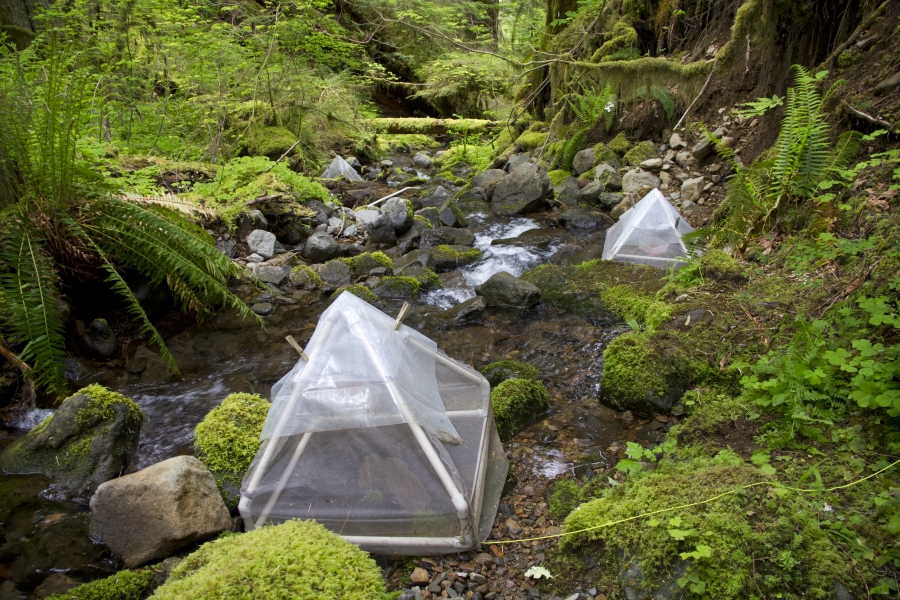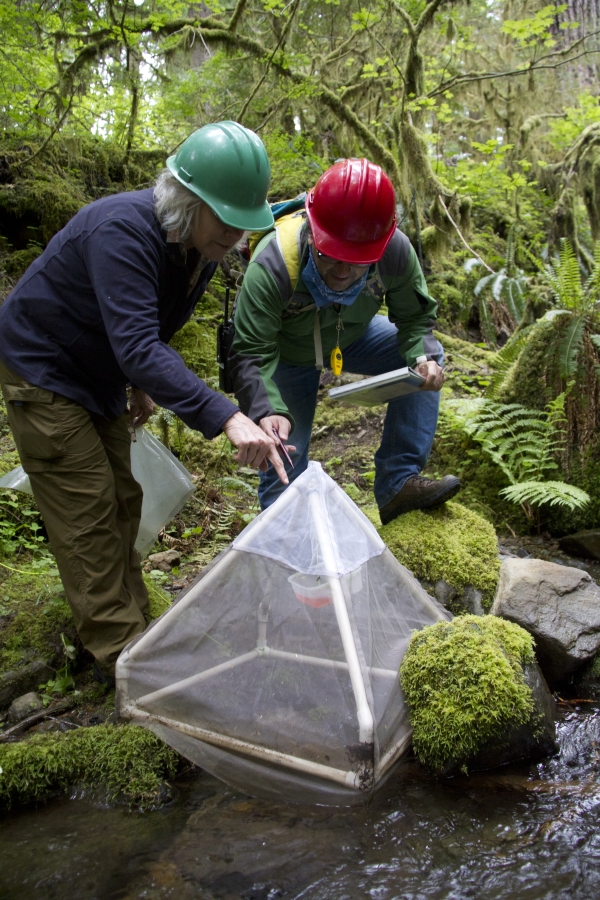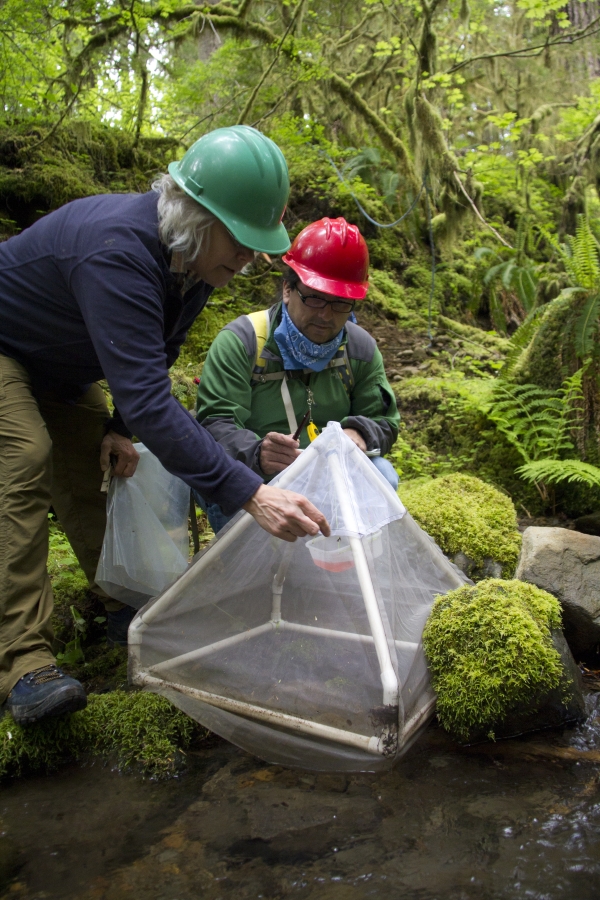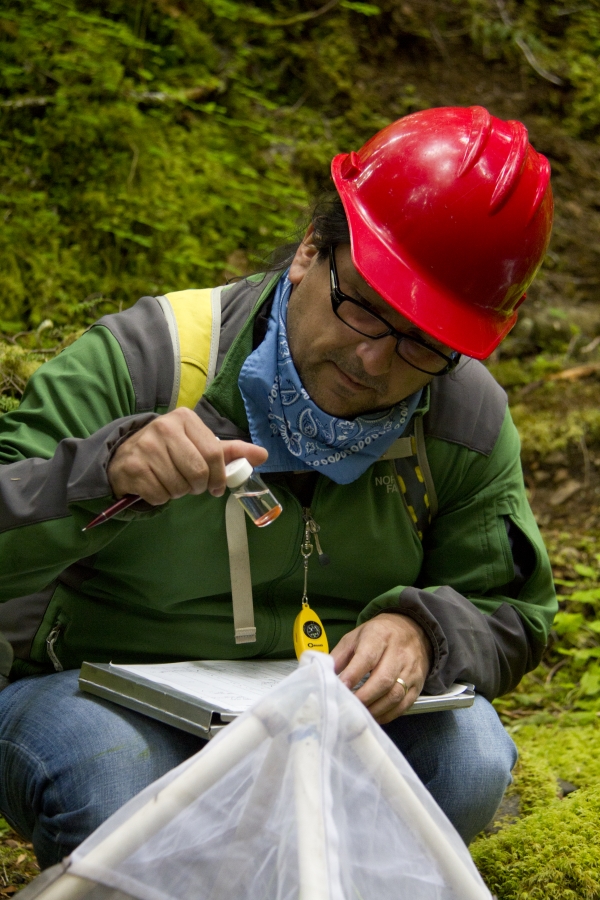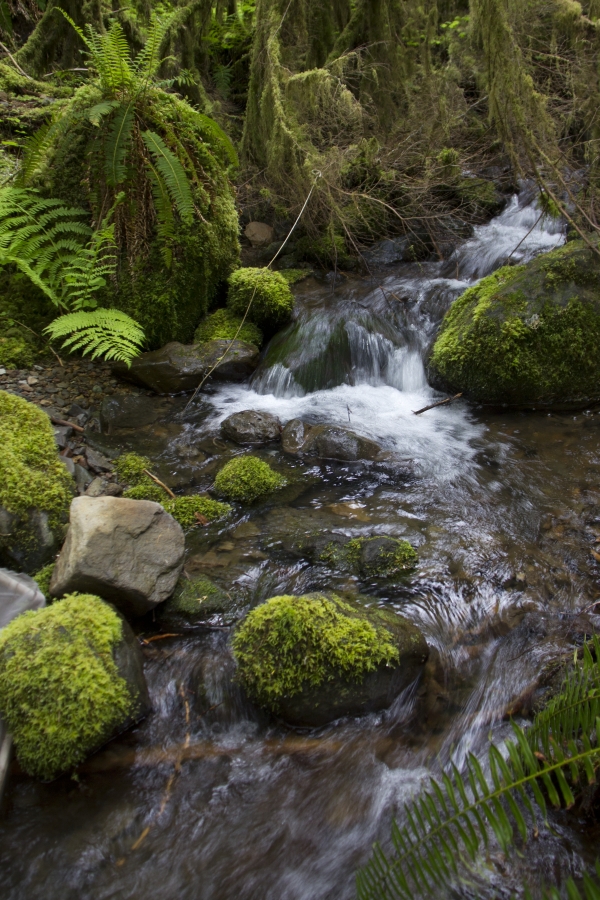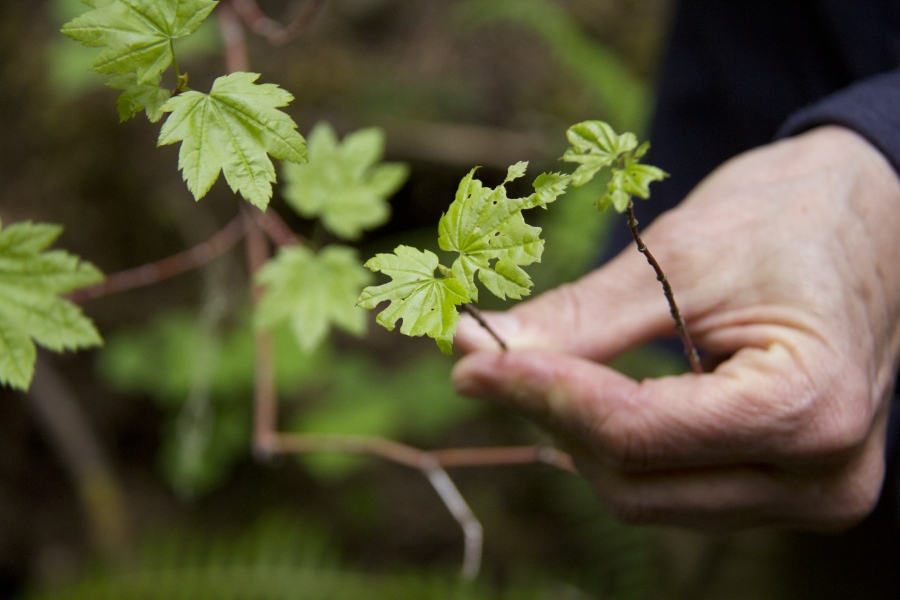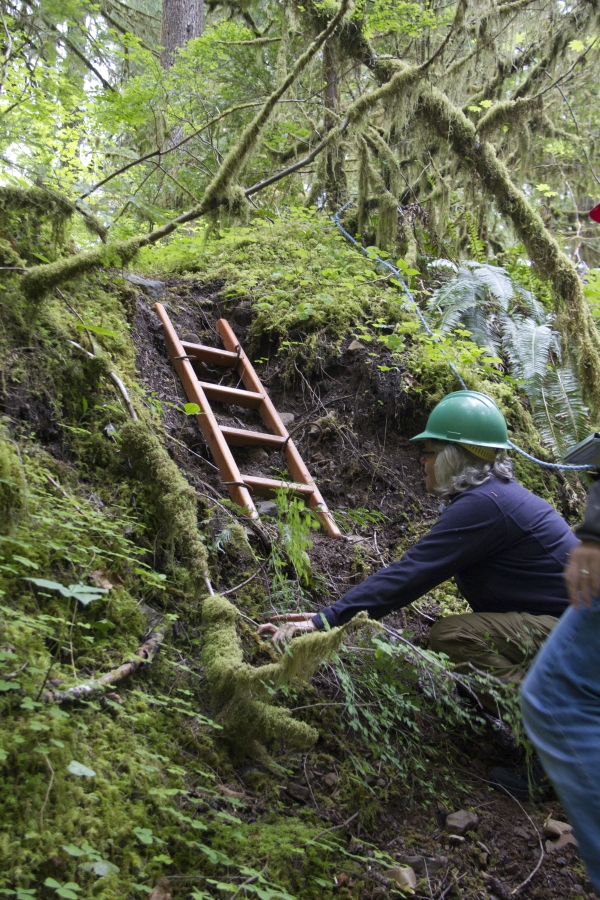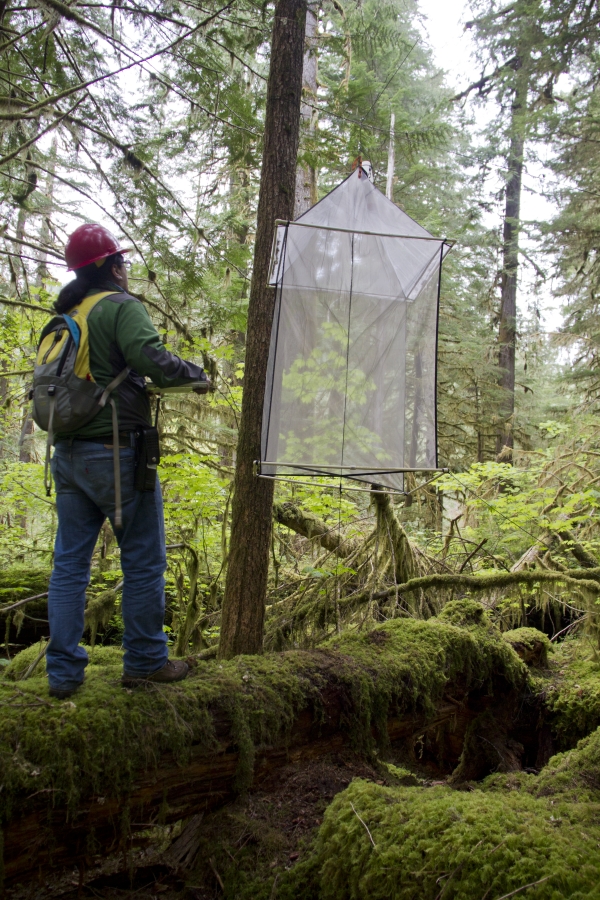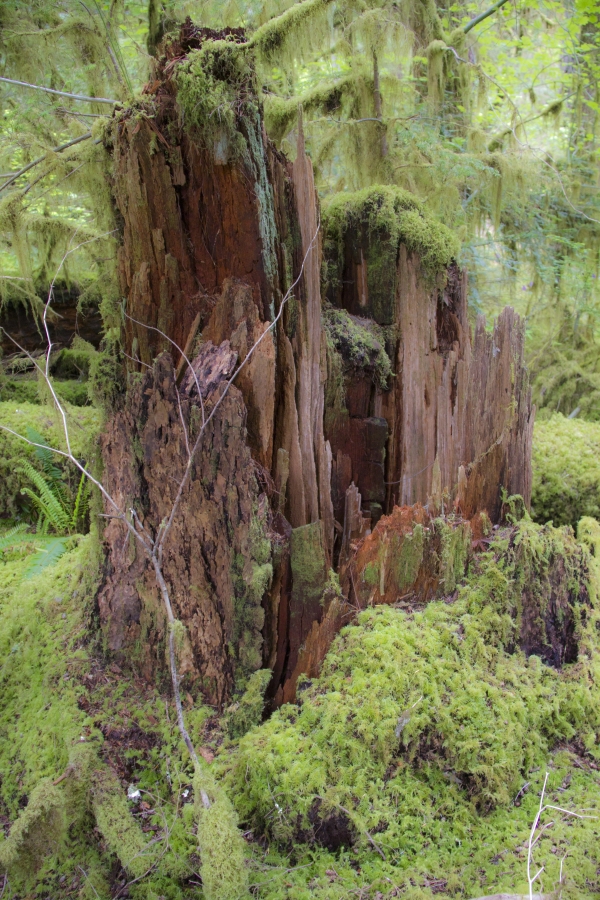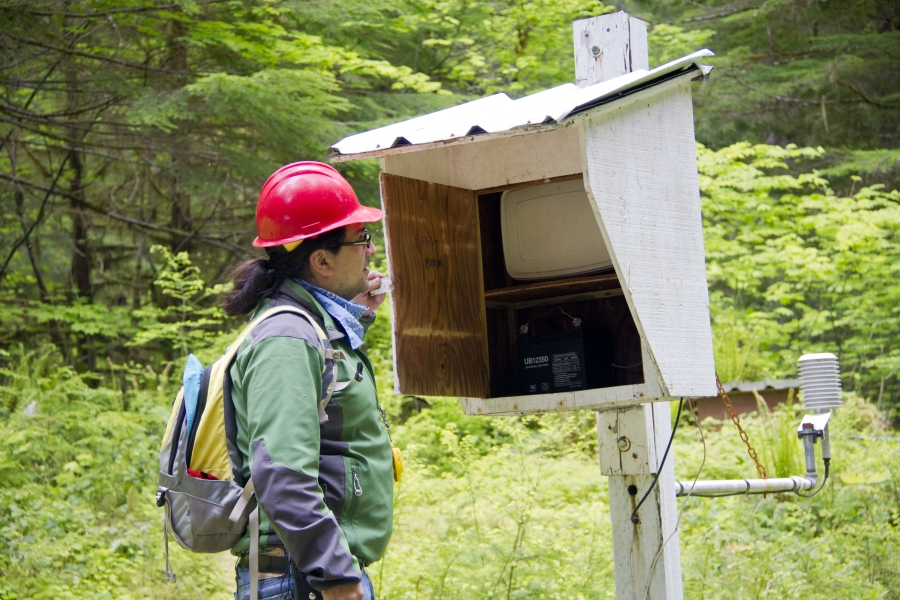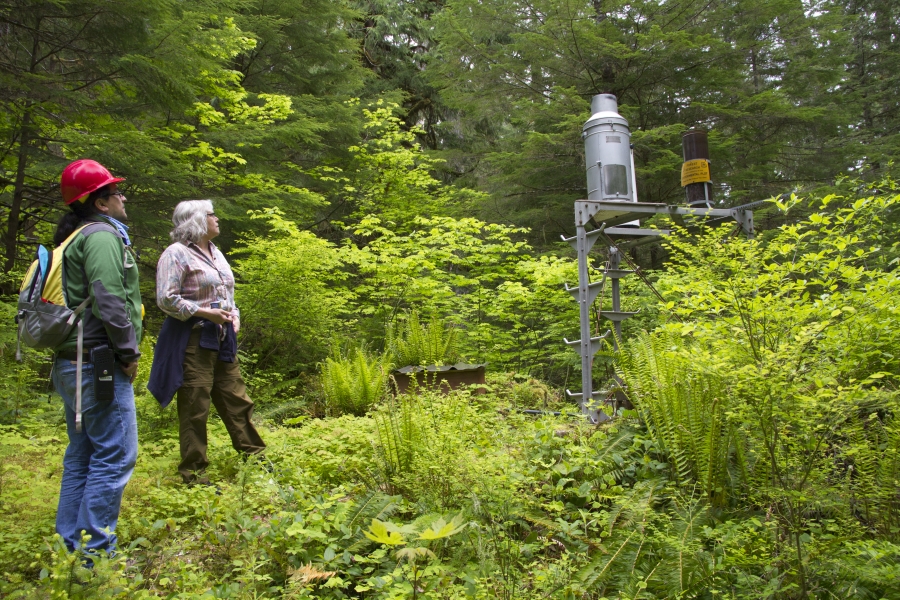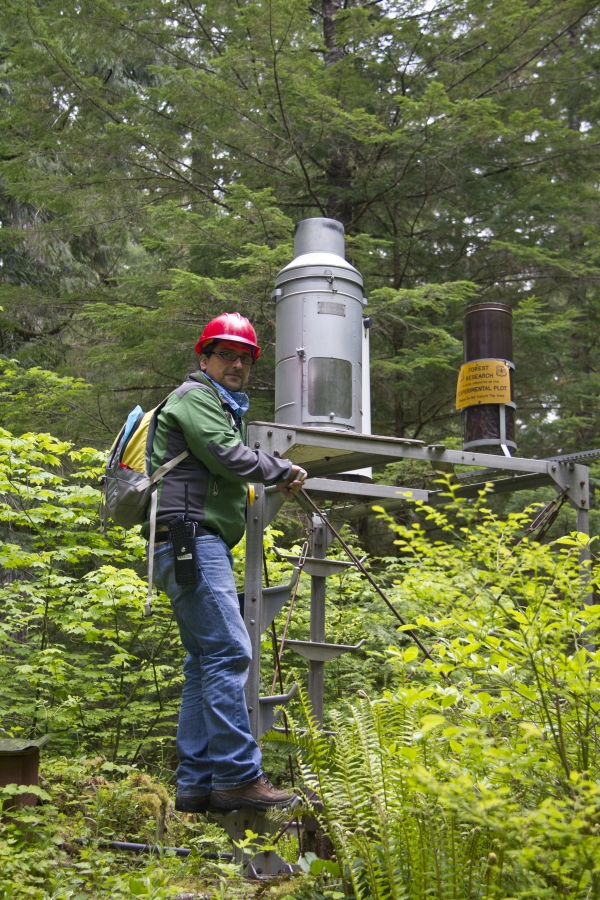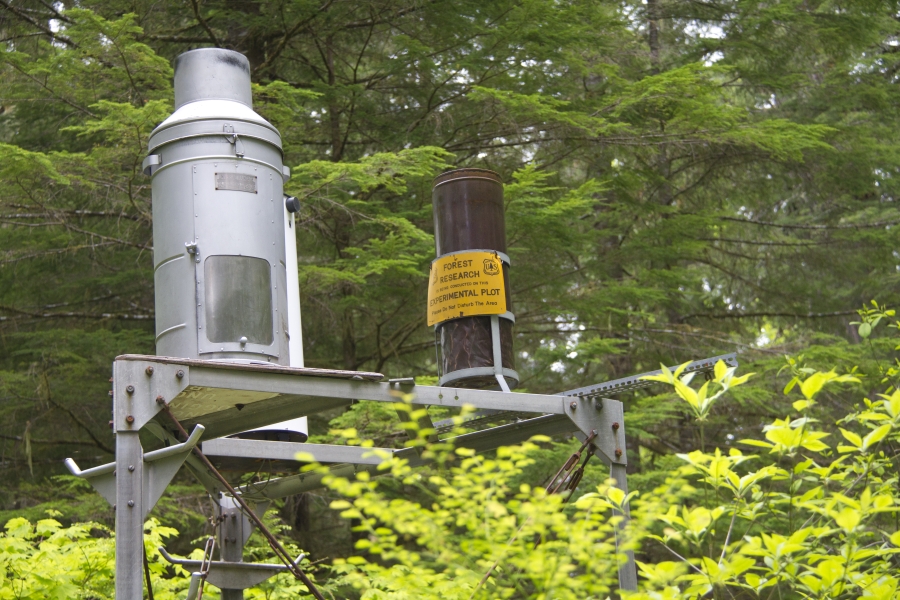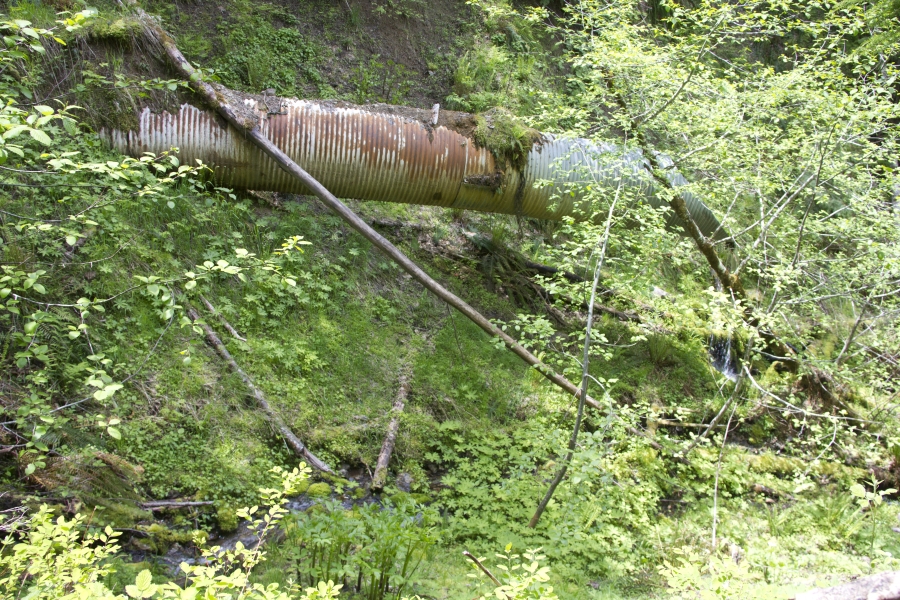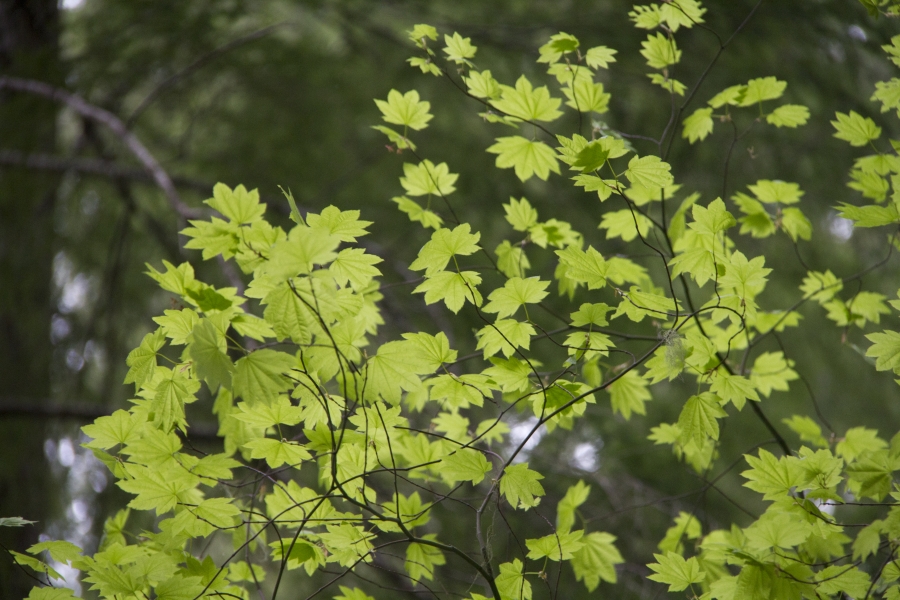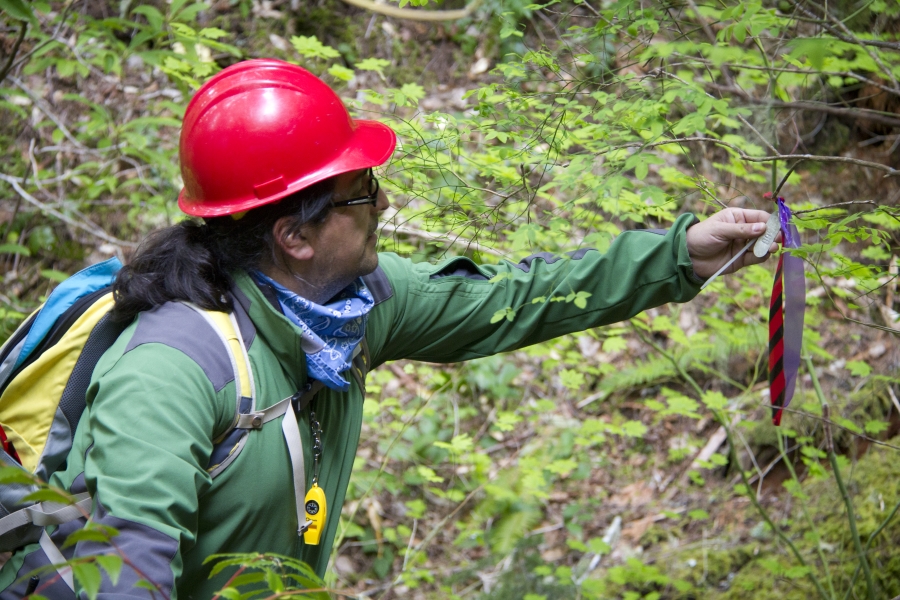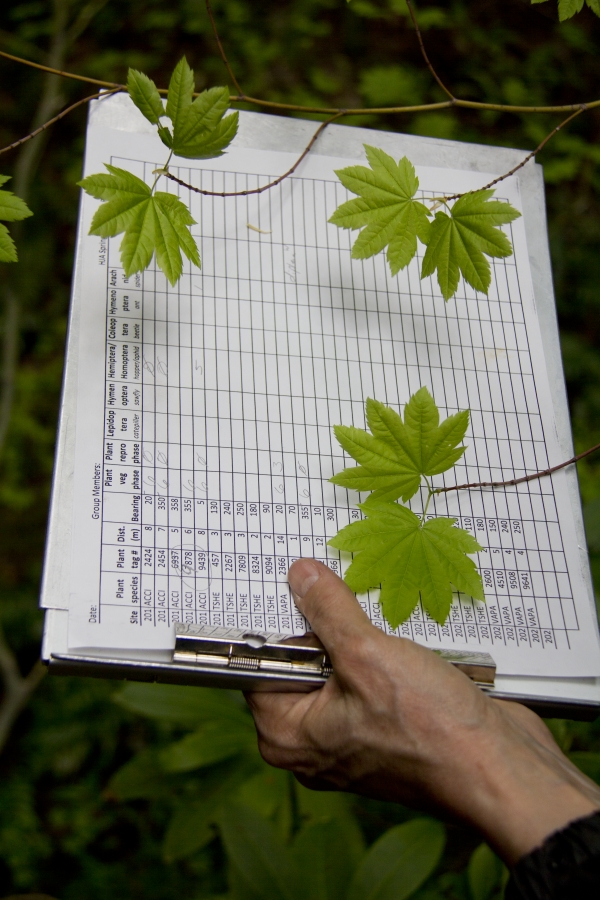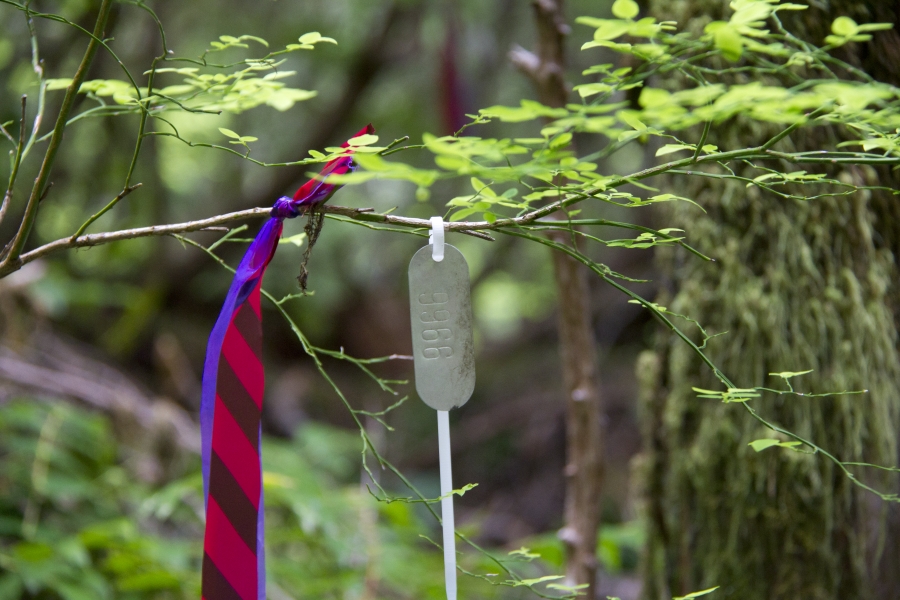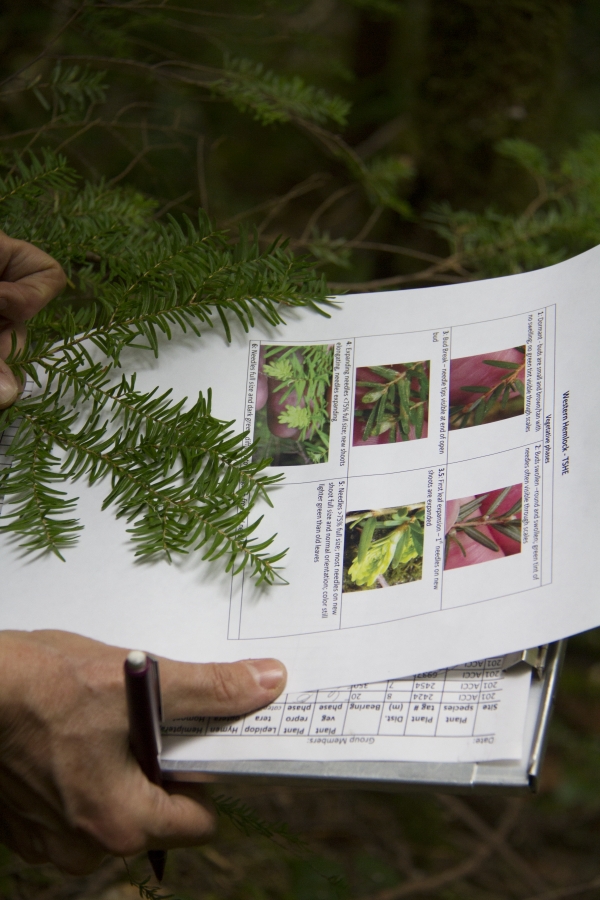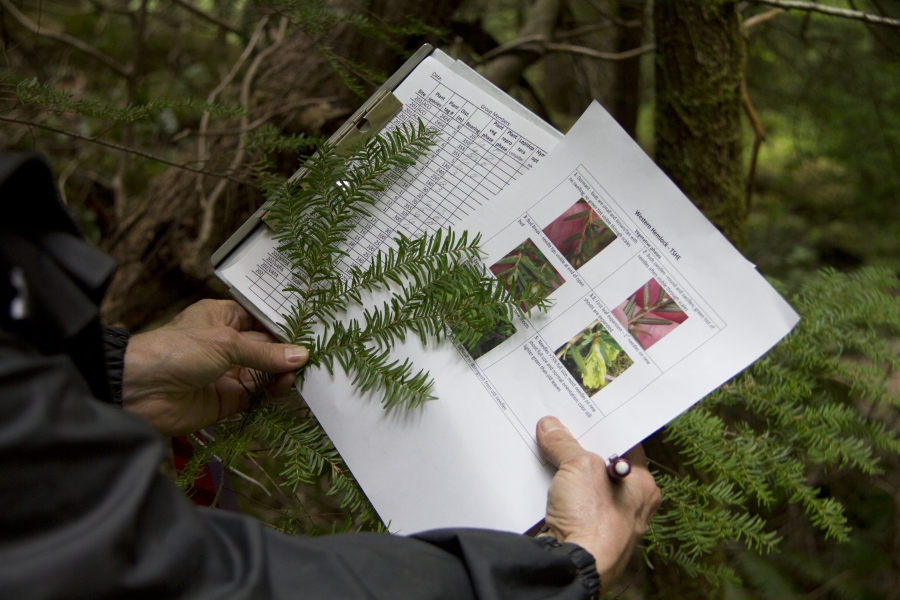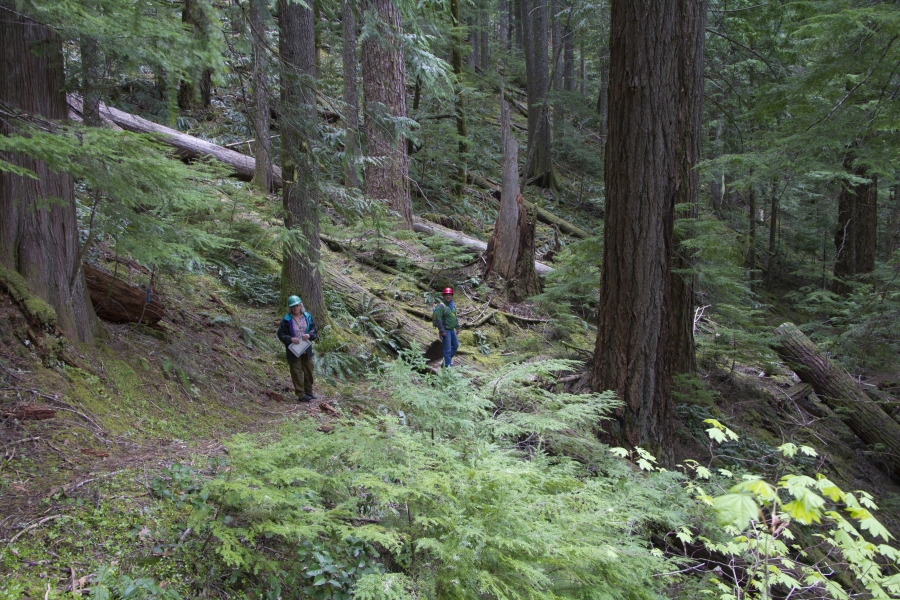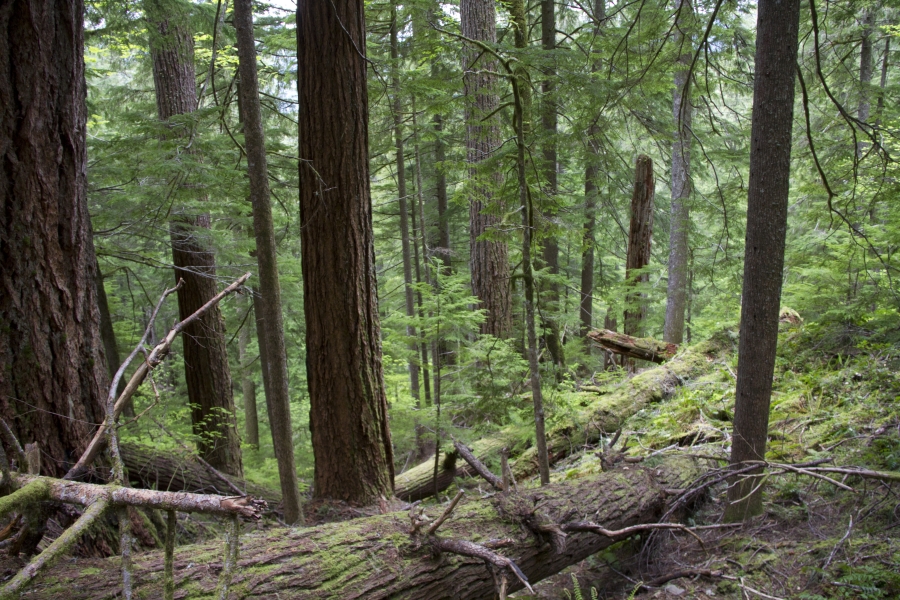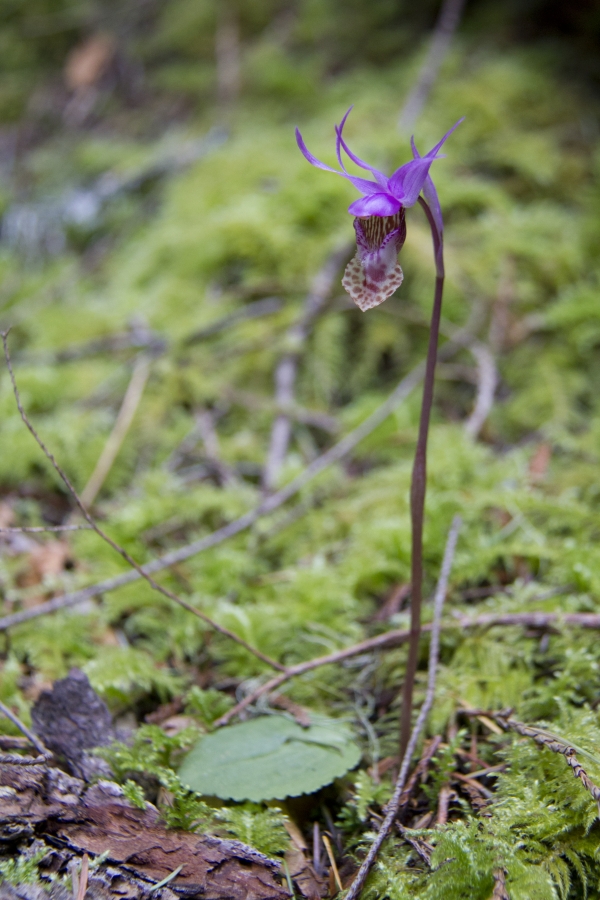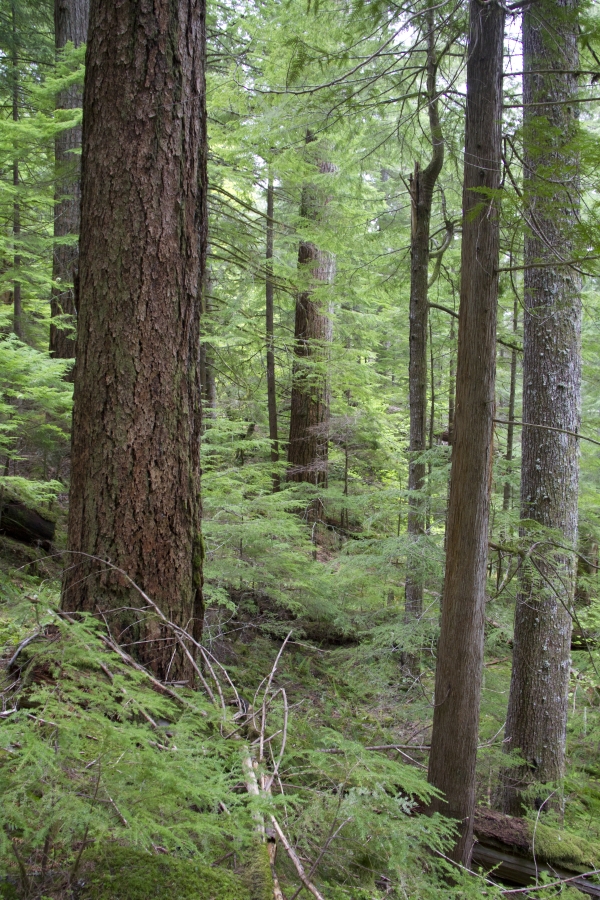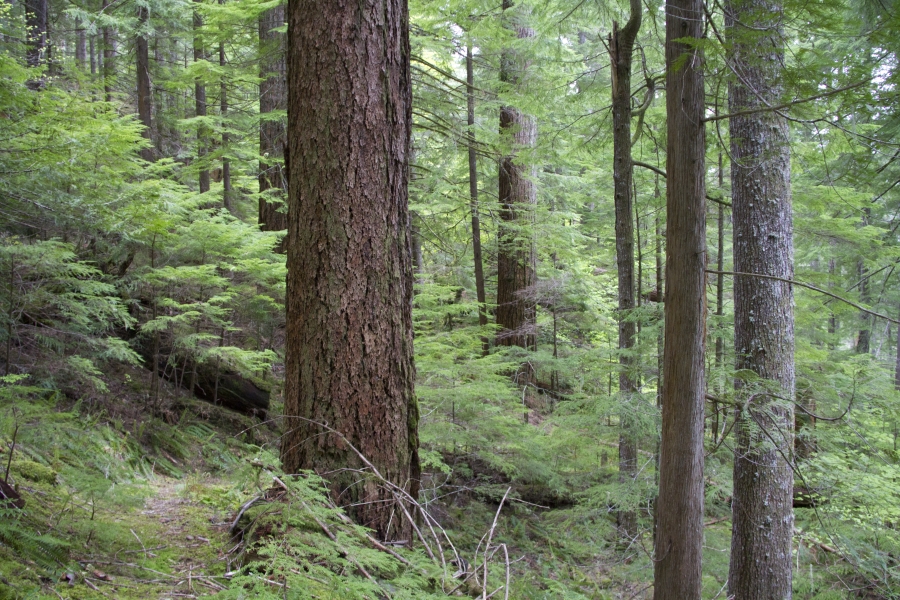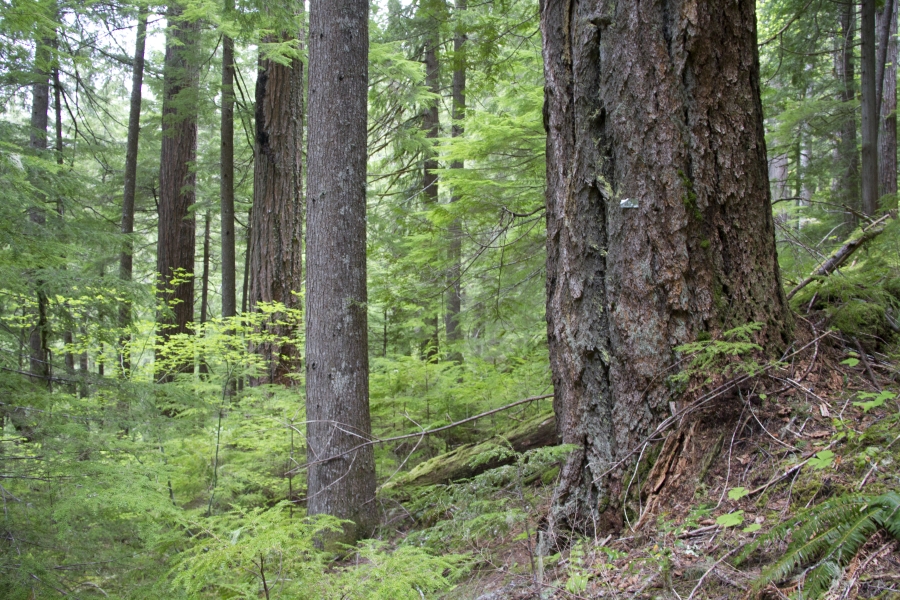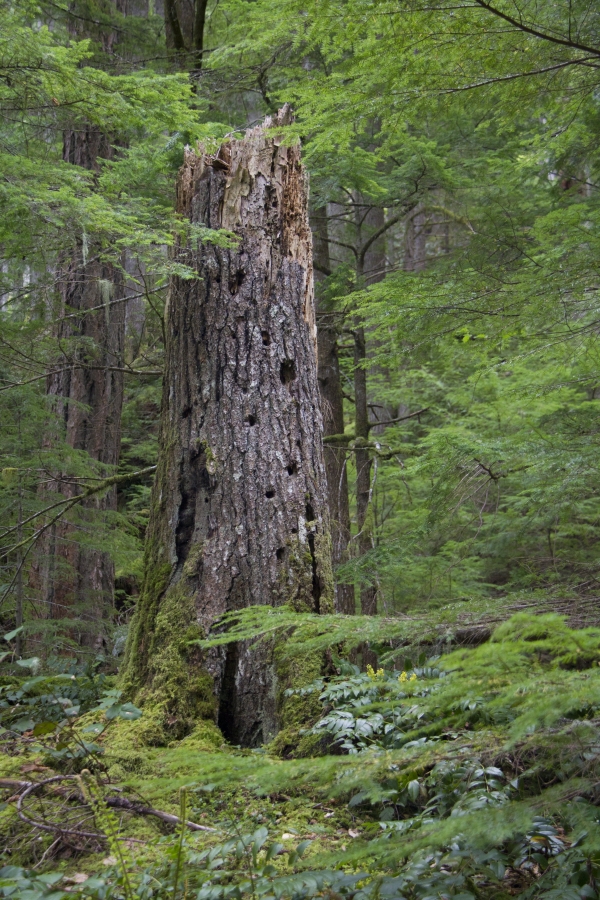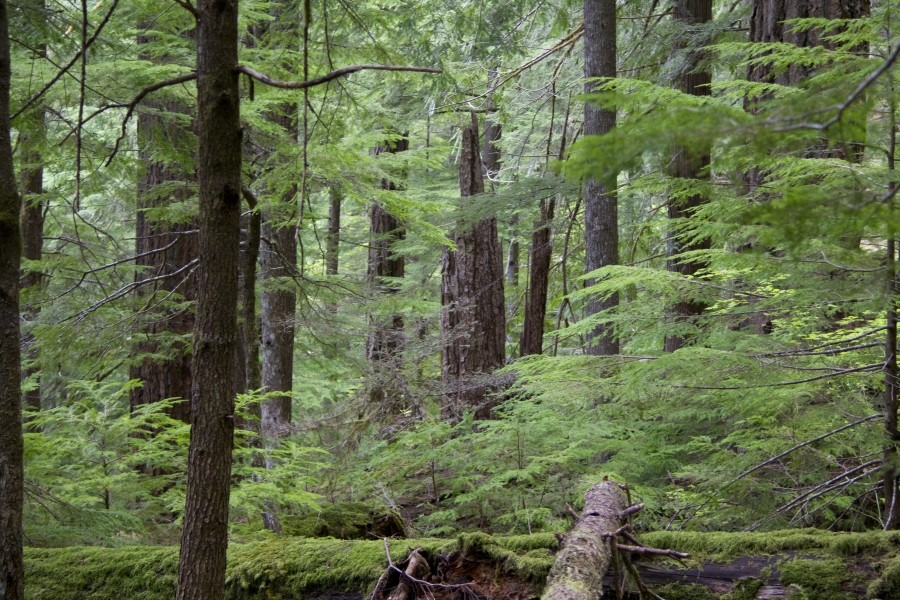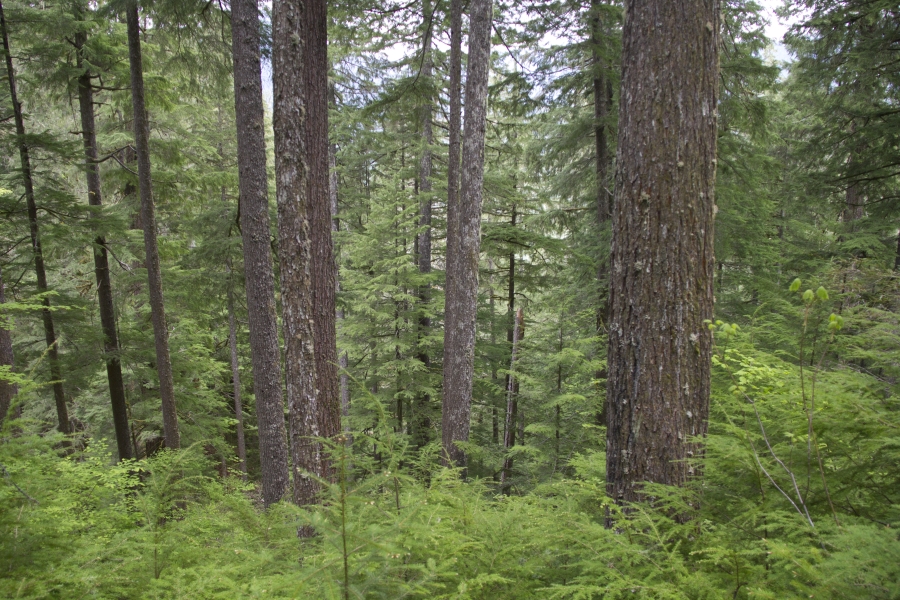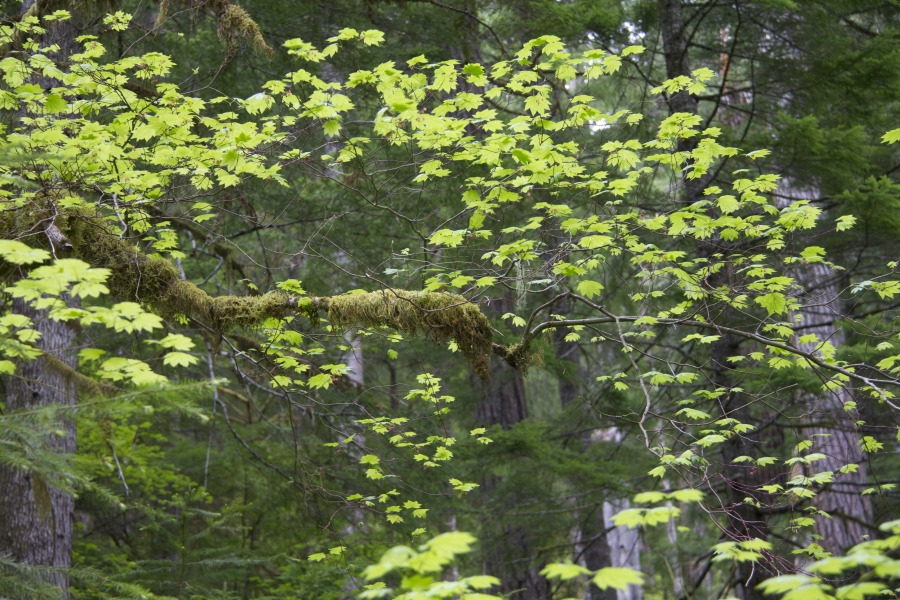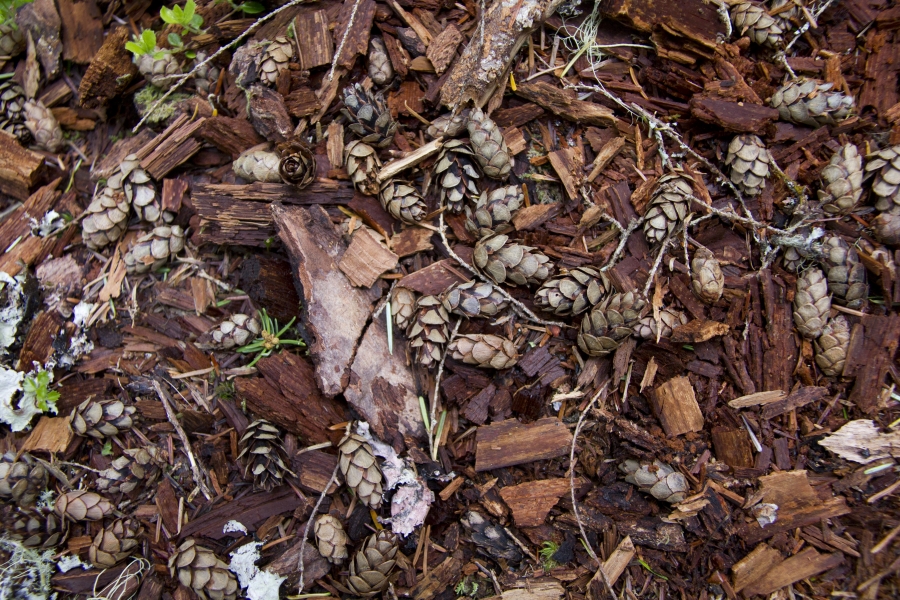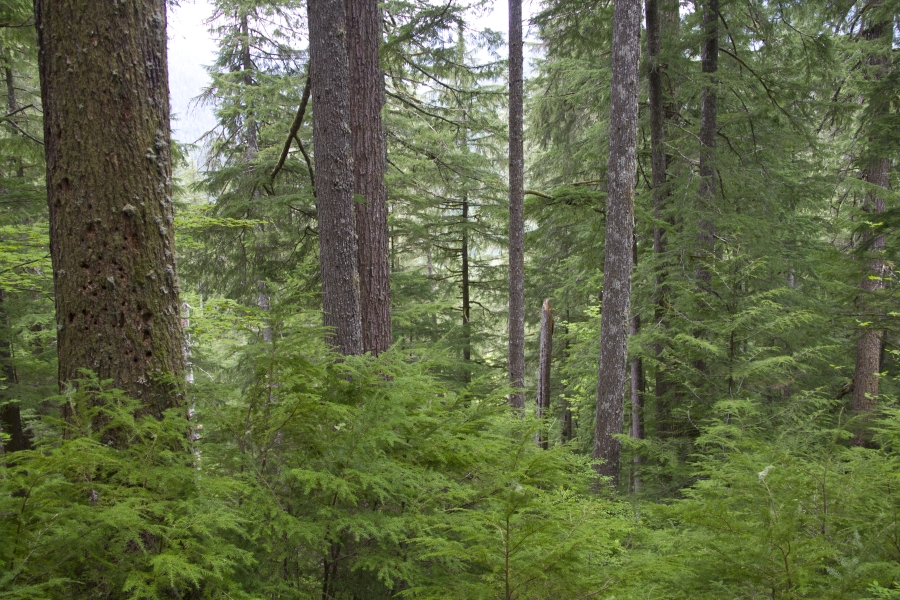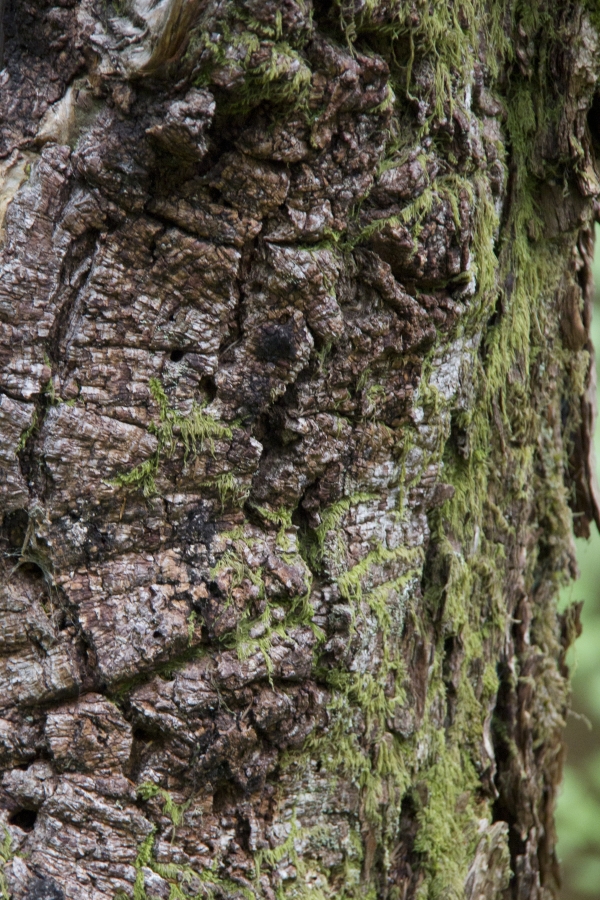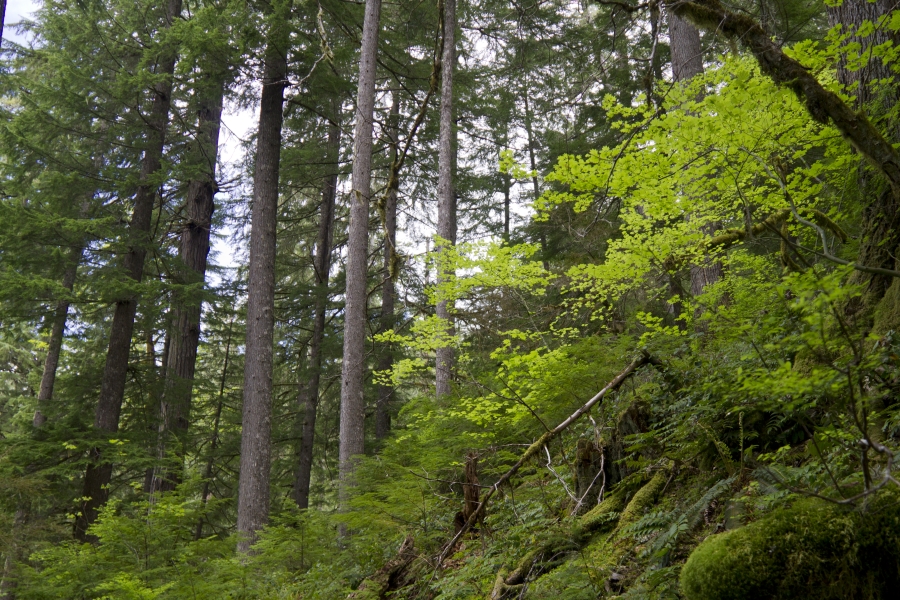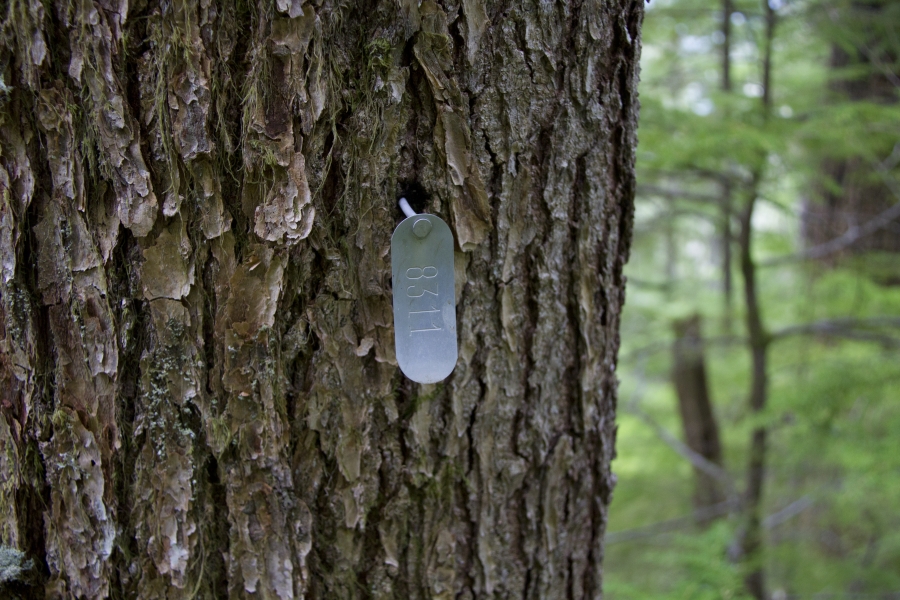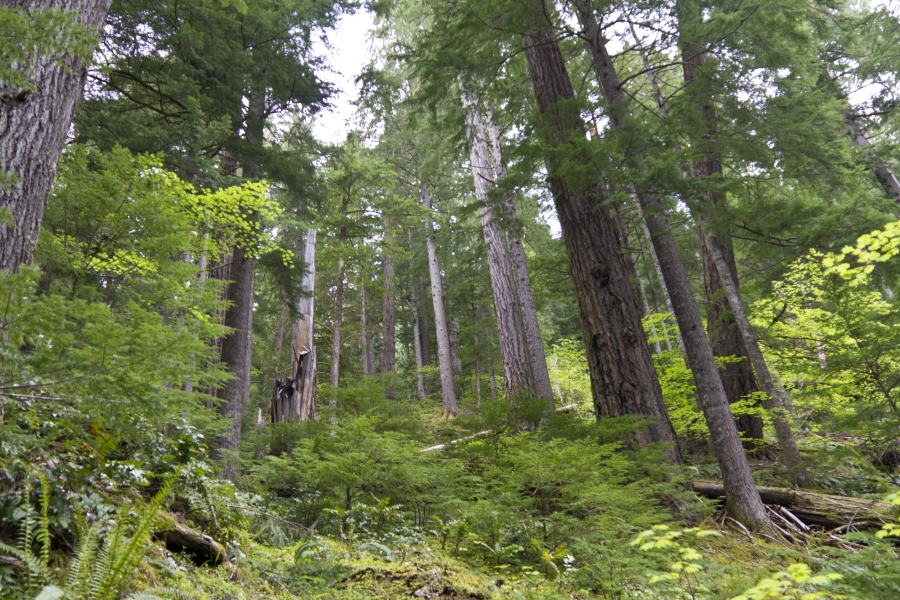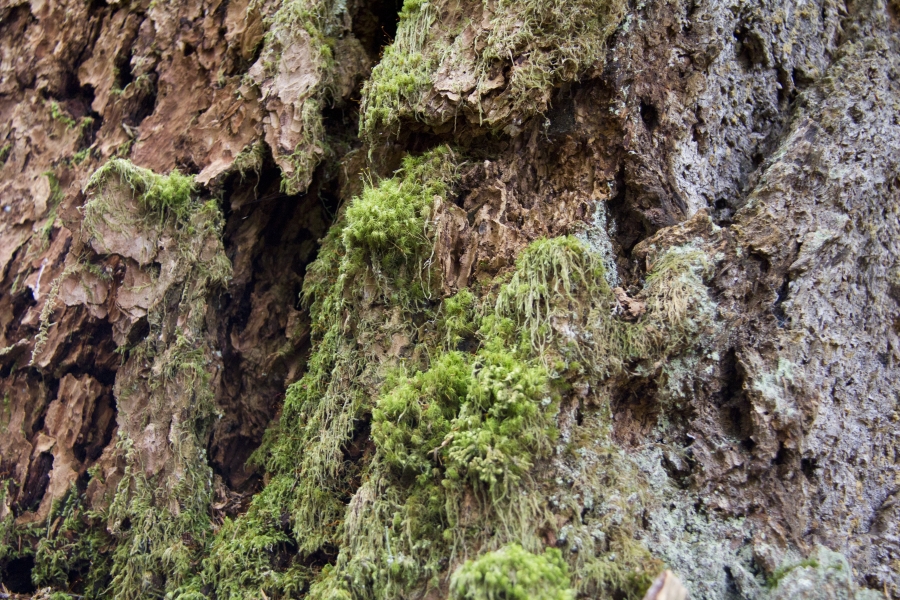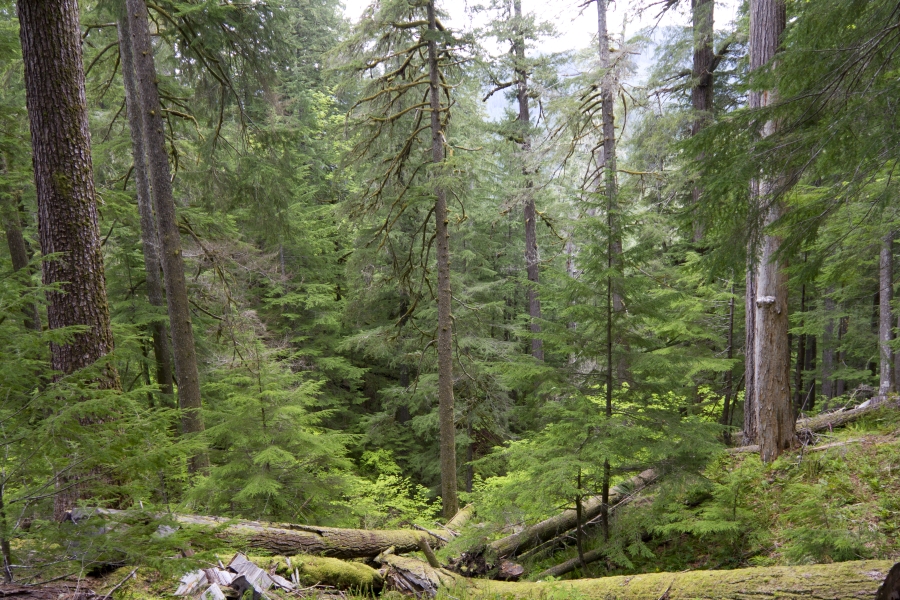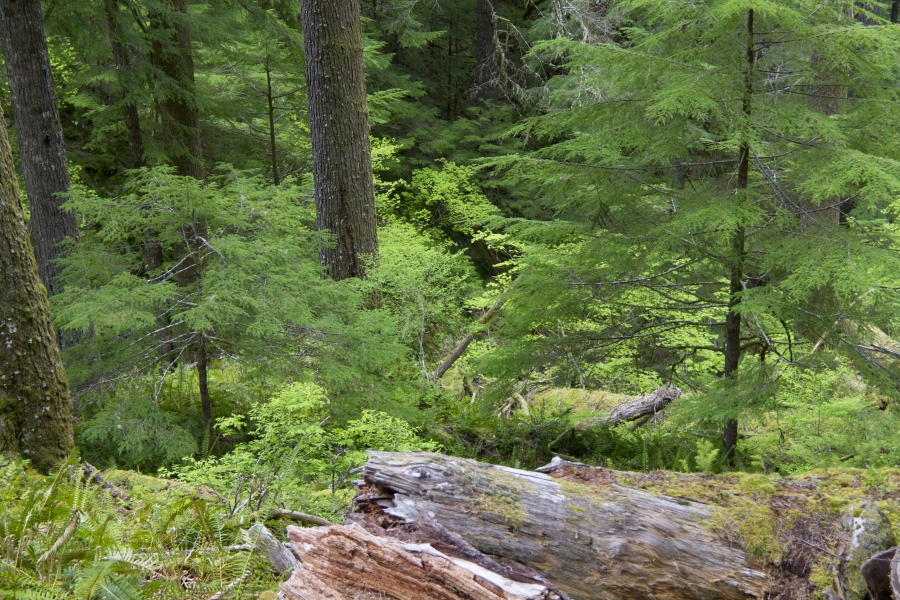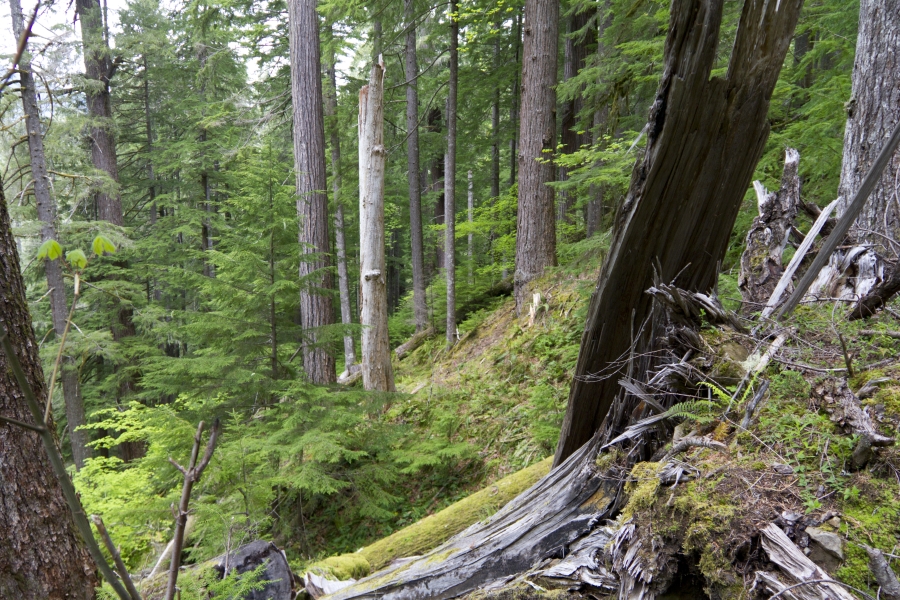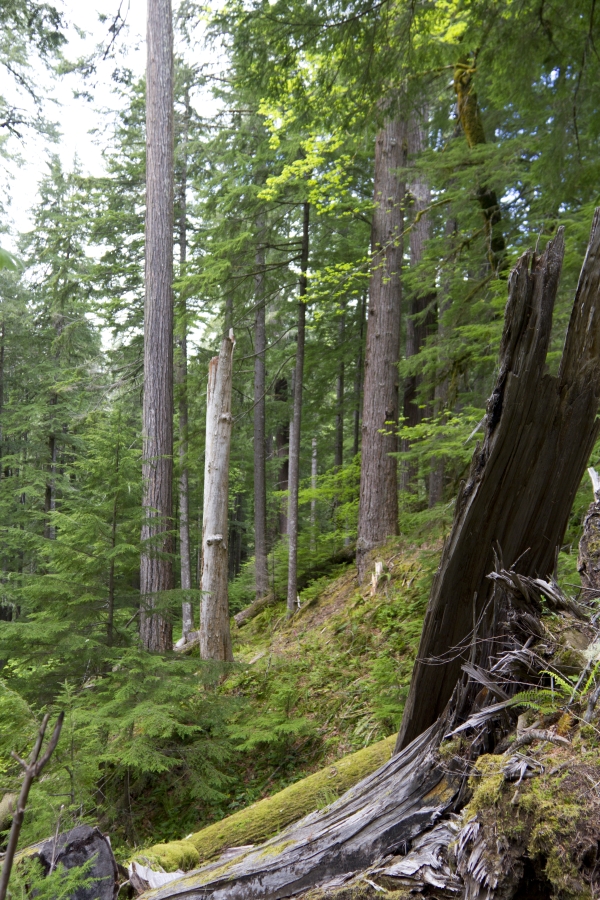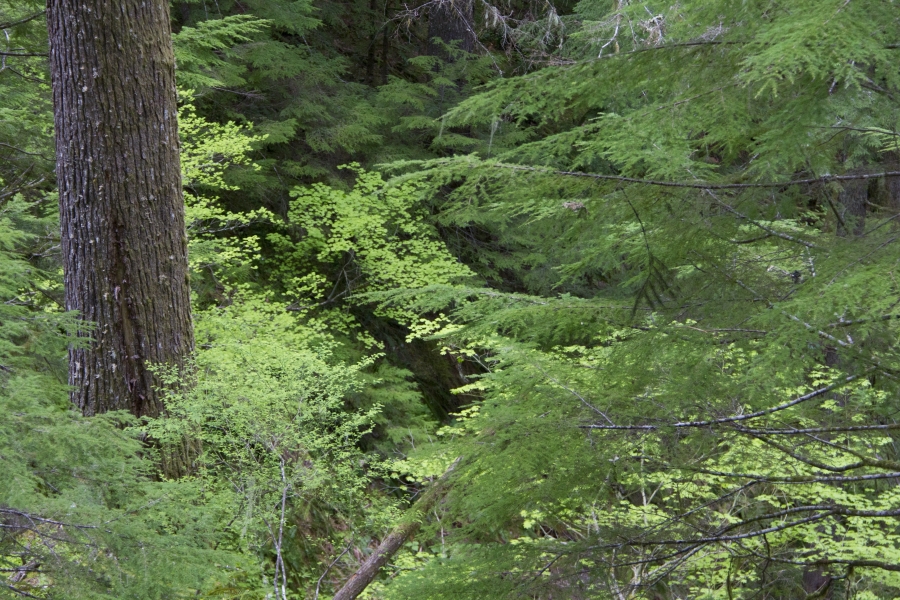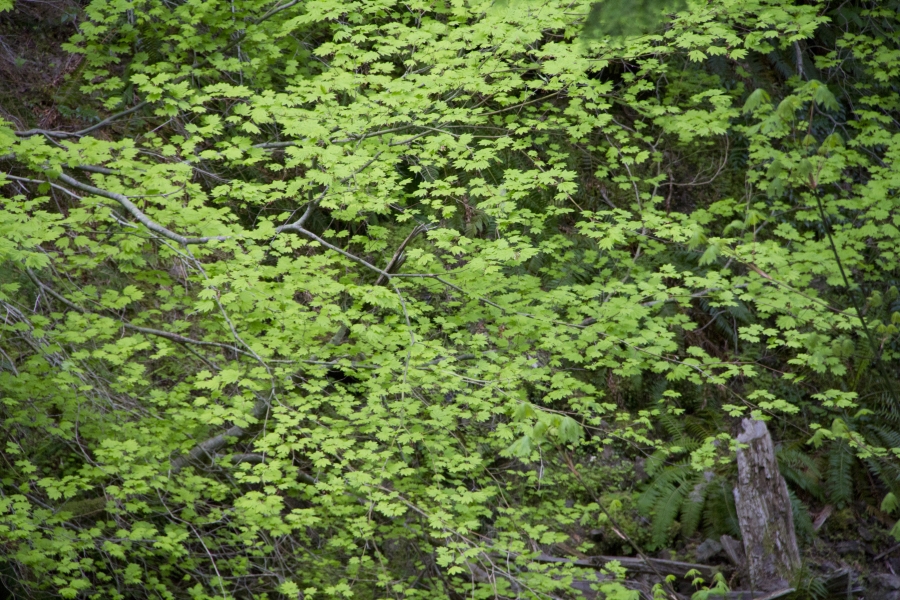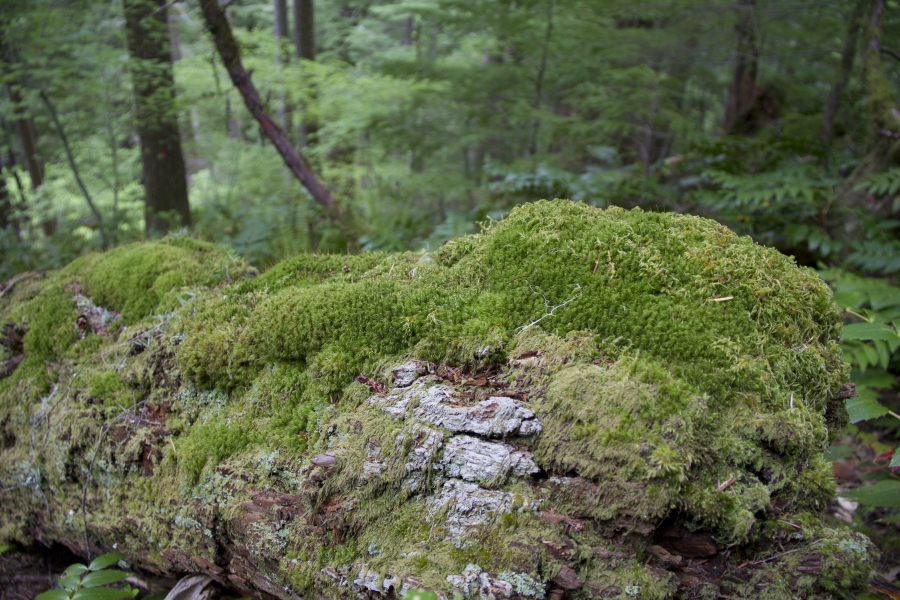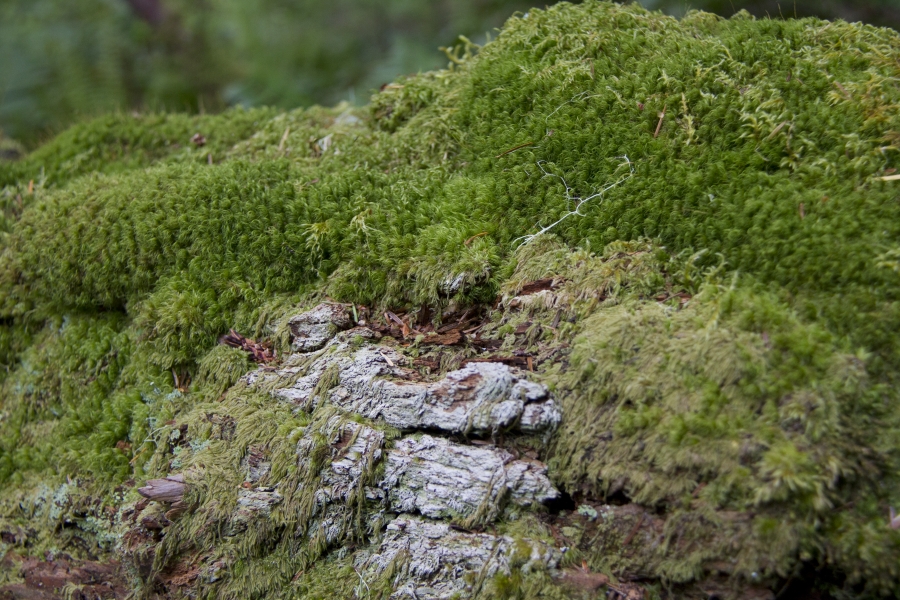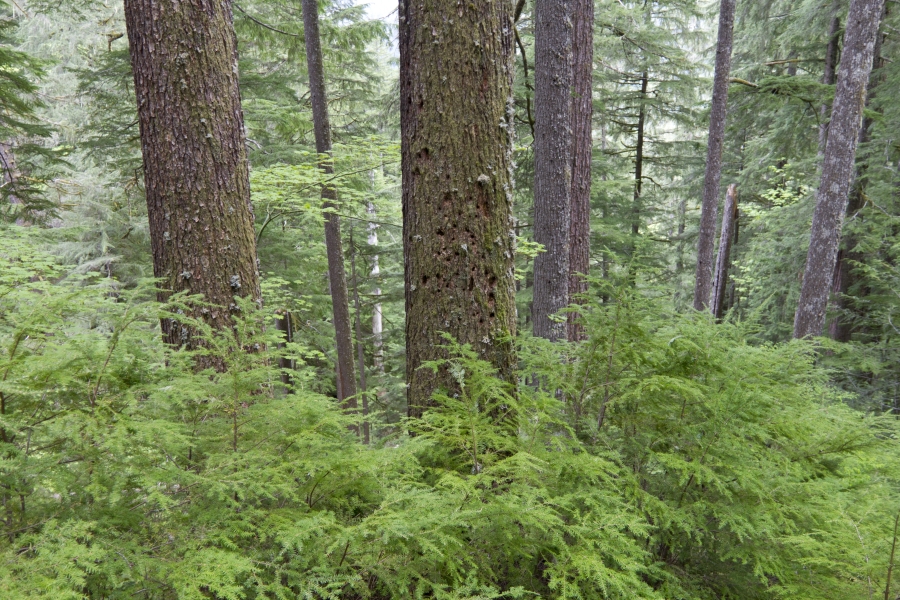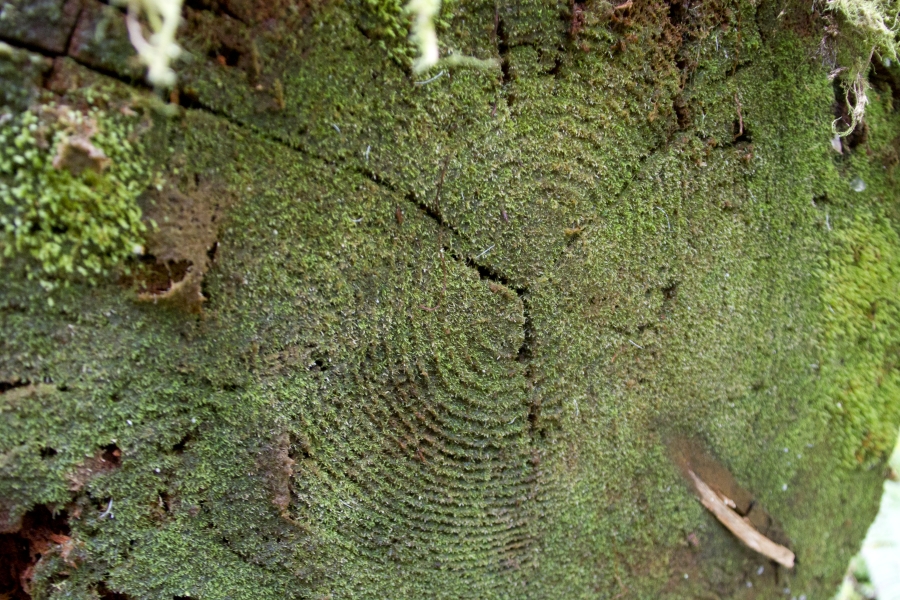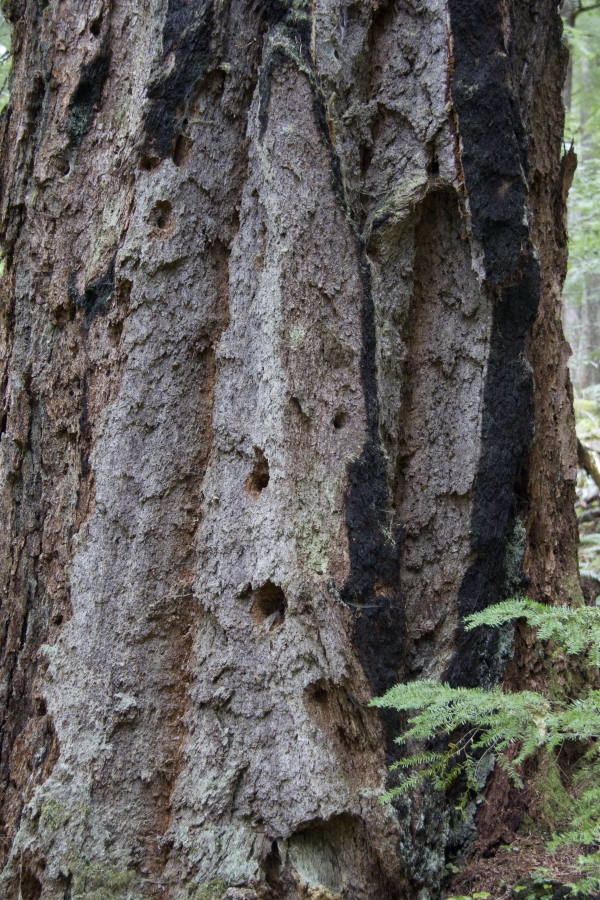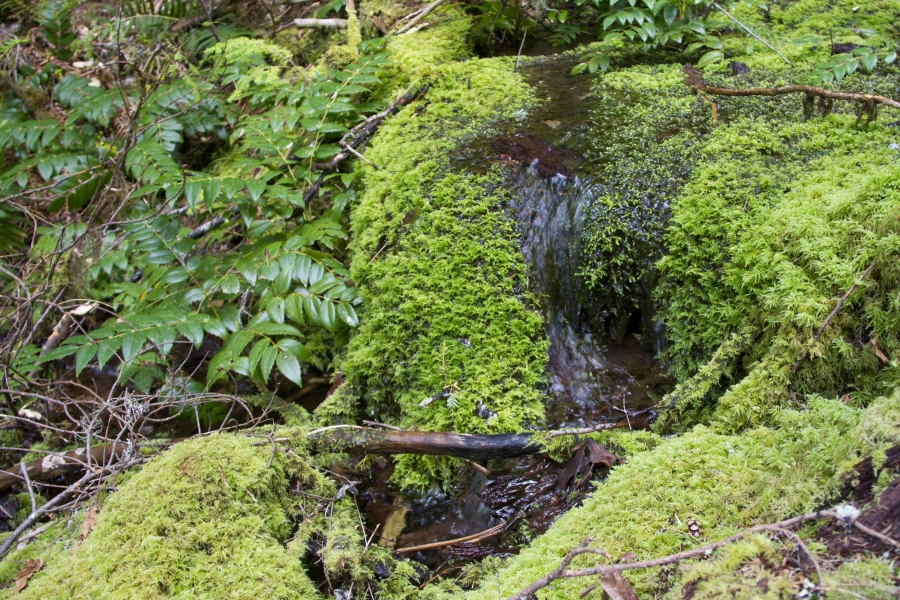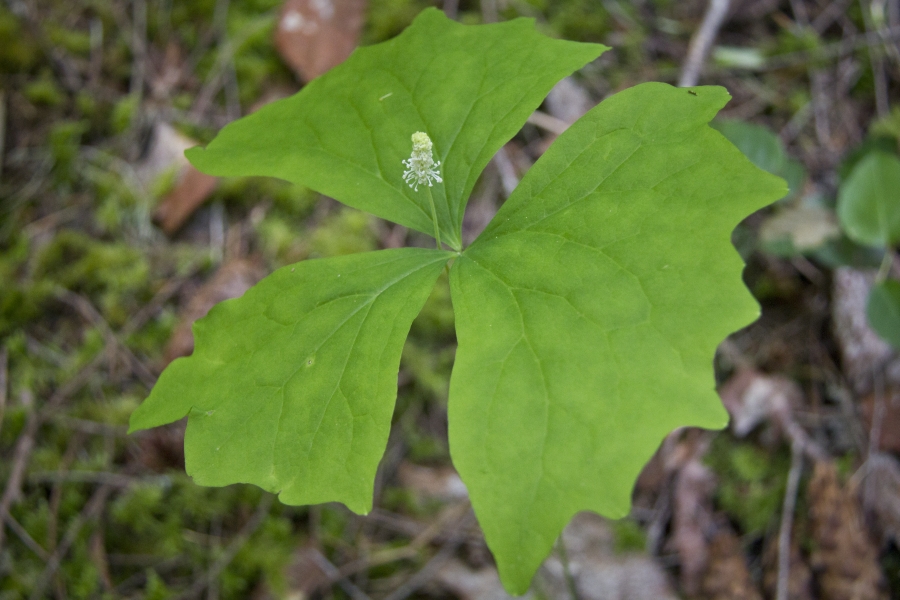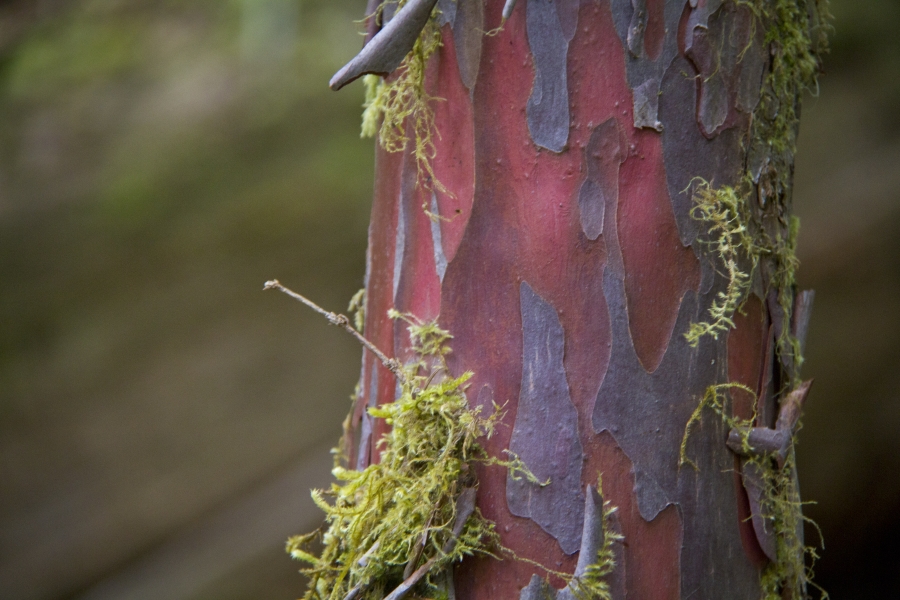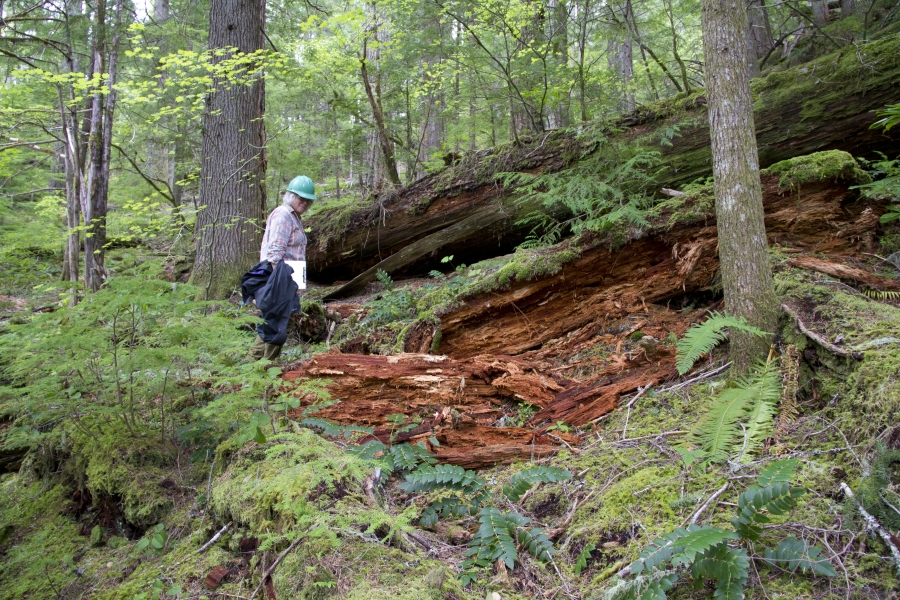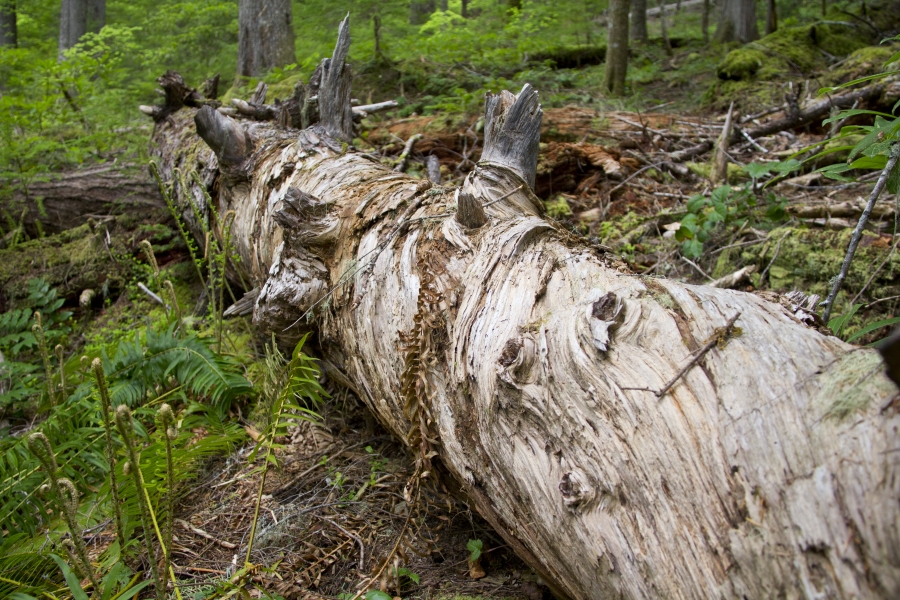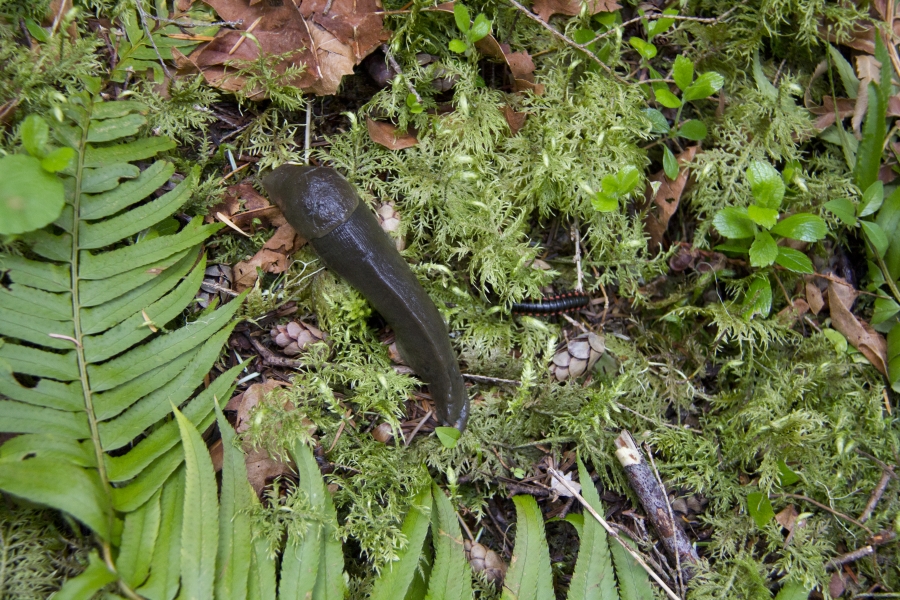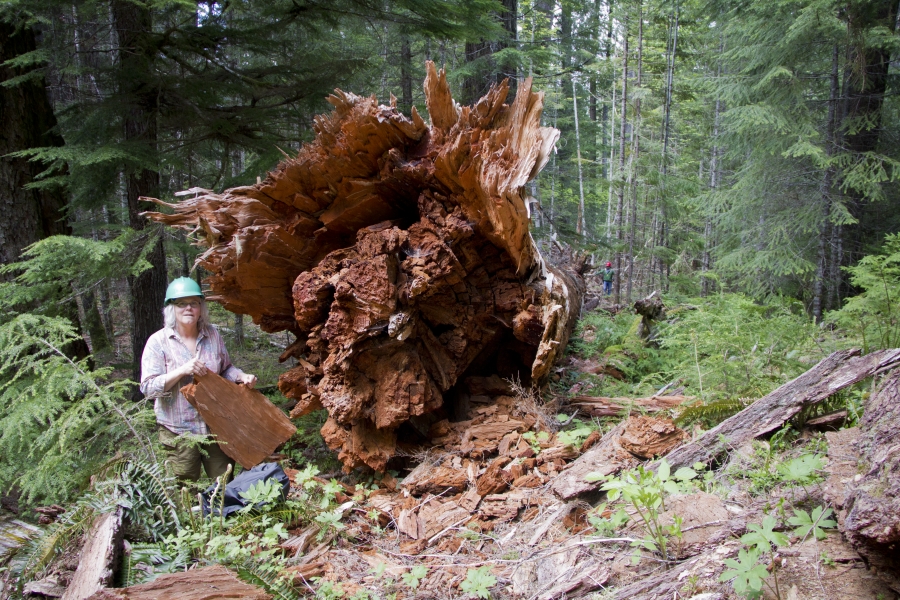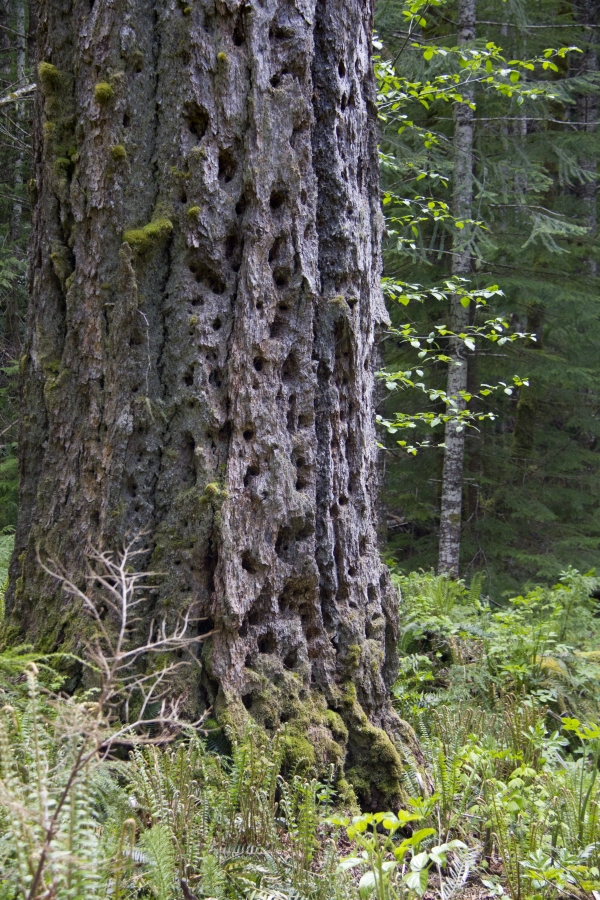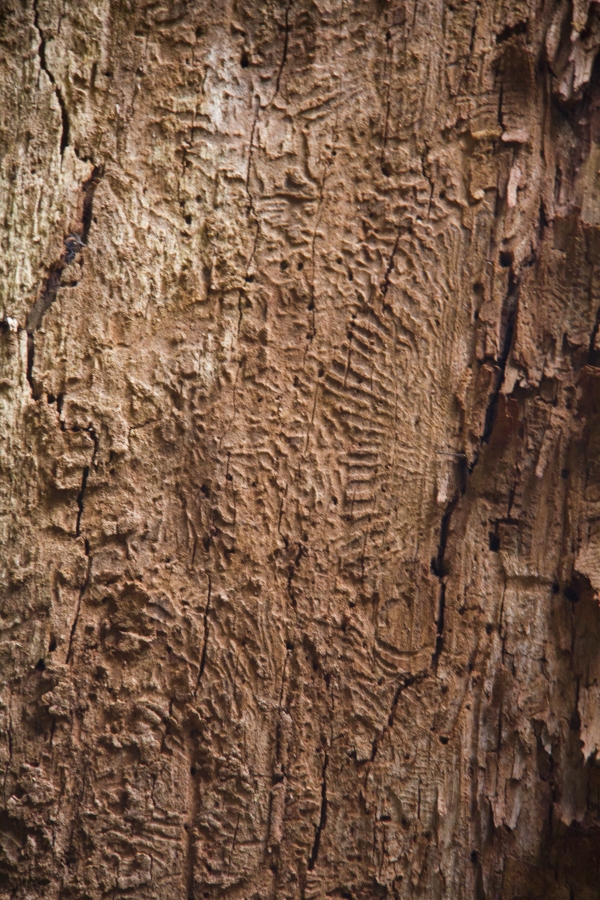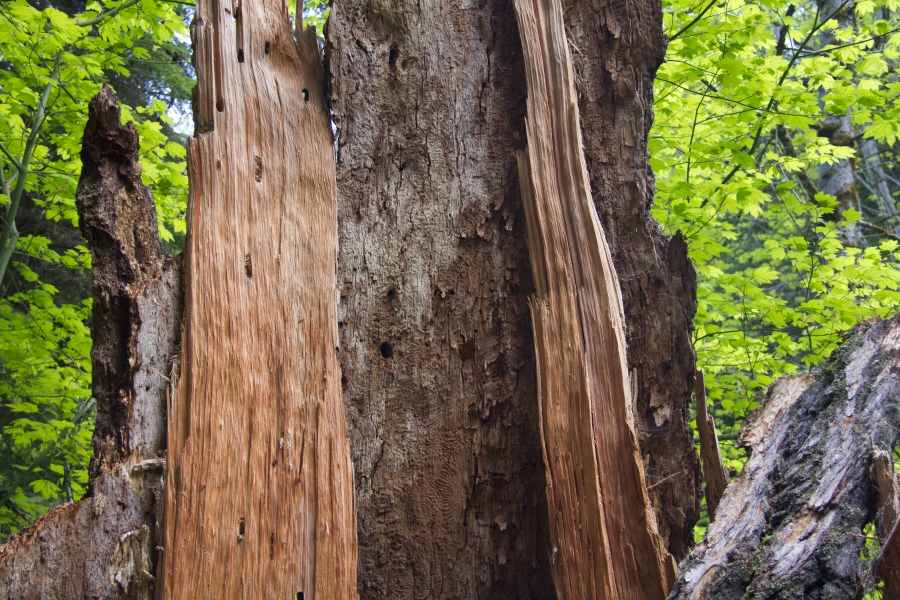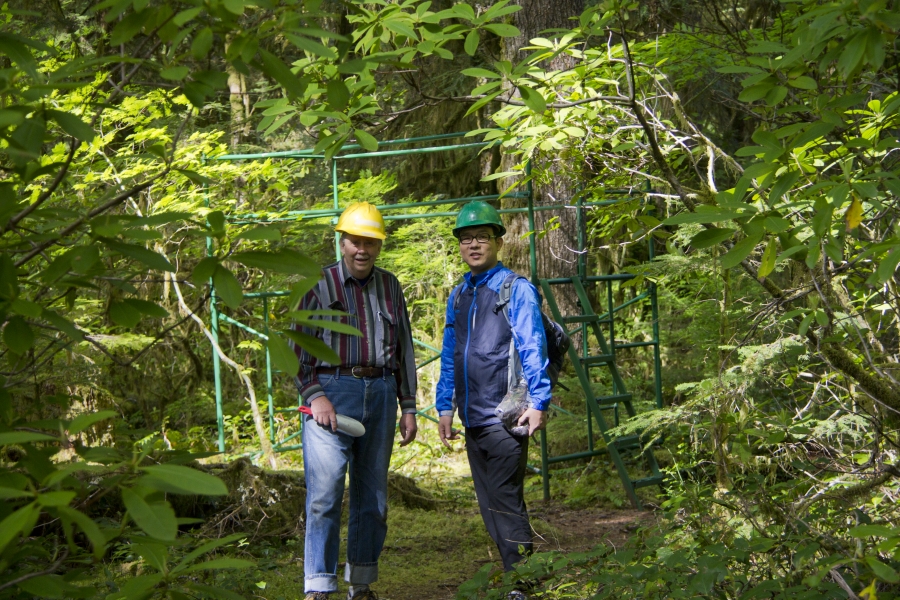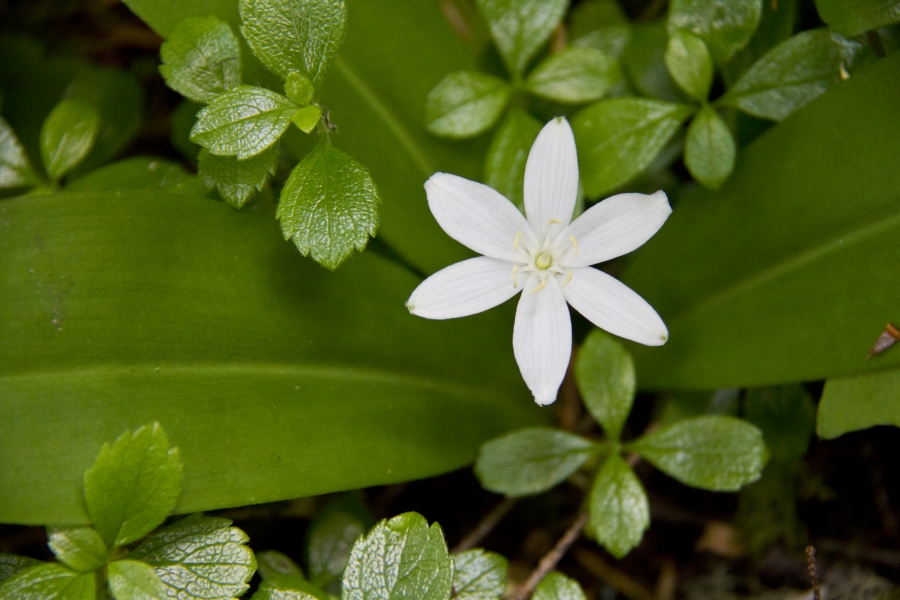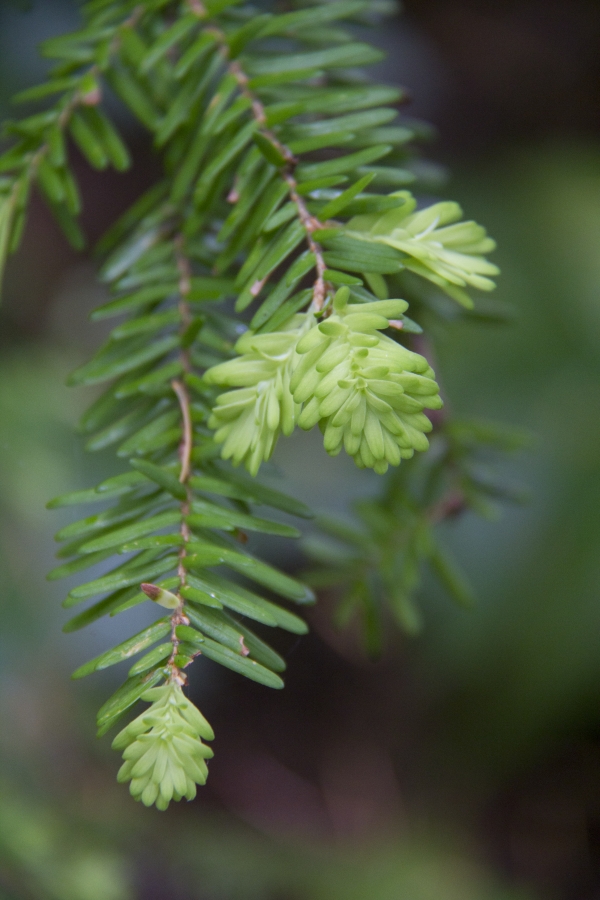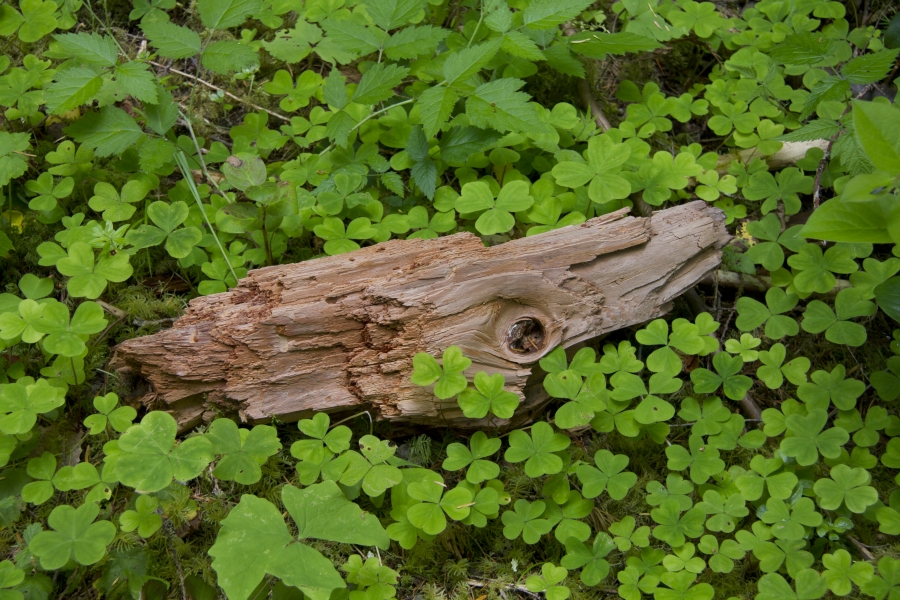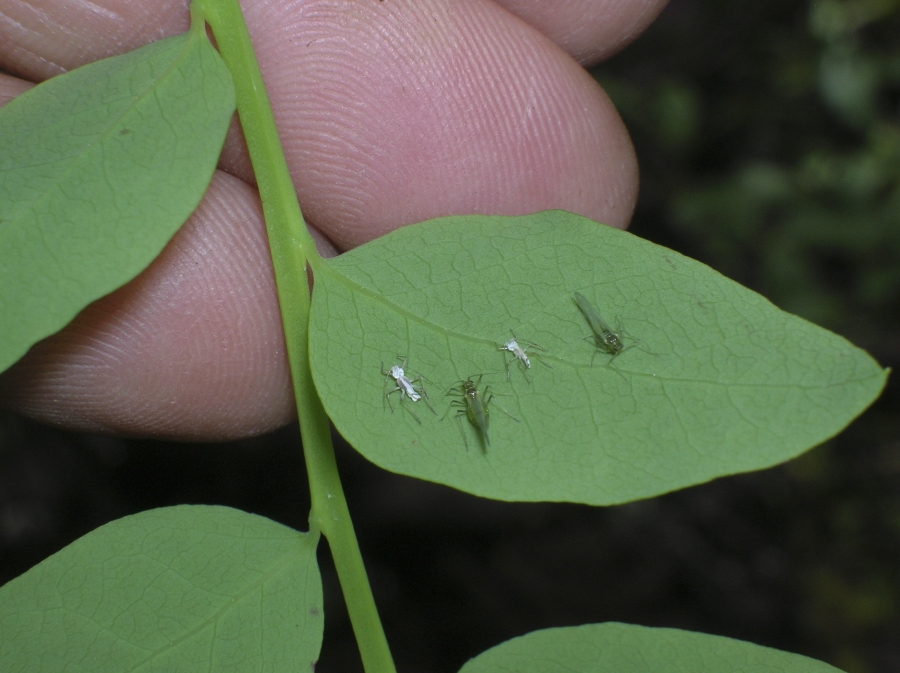Researchers review site maps and plans
Phenology Research Field Work 2011
Phenology is the study of the timing of natural phenomena, especially in relation to climate. At the Andrews Forest, scientists have been studying the timing of bud break and flowering of plants, and relating that timing, across years, to the ongoing, long-term climate records at the site.
site maps and reference sheets
site maps and reference sheets
reviewing site maps and reference sheets
Andy Moldenke talks with Hoonbok Yi from South Korea
Researchers review site maps and plans
moss and lichen covered stone with western sword fern
Vanilla leaf (Achlys triphylla)
False Solomon's Seal flower (Maianthemum racemosum)
Hobo air temperature station associated with a phenology study site
Researchers Linda Ashkenas and Ashley Pacelli collect data on plant phenology and insects
Undergraduate researcher Ashley Pacelli inspects understory plant for insects
Researchers Ashley Pacelli (left) and Linda Ashkenas (right) collect data on plant phenology and insects
decomposing wood in the forest
Researchers Linda Ashkenas and Ashley Pacelli collect data on plant phenology and insects
decomposing wood in the forest
decomposing wood in the forest
Undergraduate researcher Ashley Pacelli inspects understory plant for insects
Researchers Linda Ashkenas and Ashley Pacelli collect data on plant phenology and insects
Aphids on vine maple (Acer circinatum)
Aphids on vine maple (Acer circinatum)
using a hand lens to inspect aphids on vine maple (Acer circinatum)
using a hand lens to inspect aphids on vine maple (Acer circinatum)
using a hand lens to inspect insect feeding patterns on vine maple (Acer circinatum)
Undergraduate researcher Ashley Pacelli inspects understory plant for insects
Inspecting Acer circinatum for leaf-out stage and insects
Linda Ashkenas records data for the phenology project
Inspecting Acer circinatum for leaf-out stage and insects
flagged understory plants for sampling and hobo air temperature station
Vine maple (Acer circinatum) leaf and flower, with a fly
Western Hemlock (Tsuga heterophylla)
Oregon-grape (Mahonia aquifolium) leaf and flower
Oregon-grape (Mahonia aquifolium) leaf and flower
Oregon-grape (Mahonia aquifolium) leaf and flower
Fallen log and understory at the Andrews Forest
Pacific Bleeding Heart (Dicentra formosa) flower
Undergraduate researcher Ashley Pacelli with an insect specimen
Undergraduate researcher Ashley Pacelli with an insect specimen
Collecting an insect from vine maple leaf
Rubus spectabilis (Salmonberry) flower
Rubus spectabilis (Salmonberry) flower
Adiantum pedatum (Northern Maidenhair Fern)
Researchers Ashley Pacelli (left) and Linda Ashkenas (right) collect data on plant phenology and insects
Researcher Linda Ashkenas inspects vine maple for insects
Researcher Linda Ashkenas inspects vine maple for insects
Researcher Linda Ashkenas inspects vine maple for insects
Inspecting Acer circinatum for leaf-out stage and insects
Researcher Linda Ashkenas inspects vine maple for insects
Researchers Ashley Pacelli (left) and Linda Ashkenas (right) collect data on plant phenology and insects
tagged plant for phenology study at the Andrews Forest
Researchers Linda Ashkenas and Ashley Pacelli collect data on plant phenology and insects
tagged plant for phenology study at the Andrews Forest
beetle on the tip of an understory Douglas fir
Hobo air temperature station associated with a phenology study site
Researcher Ivan Arismendi inspects understory plants for phenolgy stage and insects
Researchers Ivan Arismendi and Sherri Johnson
Researchers Ivan Arismendi and Sherri Johnson
vine maple (Acer circinatum) over a small stream
emergence traps for aquatic insect placed along a stream in the HJ Andrews Experimental Forest LTER site
emergence traps for aquatic insect placed along a stream in the HJ Andrews Experimental Forest LTER site
emergence traps for aquatic insect placed along a stream in the HJ Andrews Experimental Forest LTER site
Sherri Johnson and Ivan Arismendi inspect emergence insect traps in WS02
Sherri Johnson and Ivan Arismendi inspect emergence insect traps in WS02
Researcher Ivan Arismendi inspects a specimen collected as part of the Andrews Forest phenology study
insect leaf damage to vine maple (Acer circinatum)
ladder to ease stream access in WS02
Malaise trap for flying insects
Malaise trap for flying insects
decomposing stump in the Andrews Forest
tagged trees and sample plots in the Andrews Forest
Ivan Arismendi at the climate station in WS02 of the Andrews Forest
Ivan Arismendi and Sherri Johnson at the climate station in WS02 of the Andrews Forest
Ivan Arismendi at the climate station in WS02 of the Andrews Forest
climate station at WS02 in the Andrews Forest LTER
climate station at WS02 in the Andrews Forest LTER
access road in the HJ Andrews Experimental Forest LTER site
exposed culvert pipe from previous logging road in WS02
USFS Researcher Sherri Johnson in front of old-growth cedar
Leaves of vine maple (Acer circinatum)
Researcher Ivan Arismendi inspects understory plants for phenolgy stage and insects
Researcher Sherri Johnson inspects understory plants for phenolgy stage and insects
Data collection sheet and vine maple (Acer circinatum) branch
tagged plant for phenology study at the Andrews Forest
Data collection sheet and western hemlock (Tsuga heterophylla) branch
Data collection sheet and western hemlock (Tsuga heterophylla) branch
Calypso orchid (Calypso bulbosa)
old-growth forest in the HJ Andrews Experimental Forest LTER site
old-growth forest in the HJ Andrews Experimental Forest LTER site
old-growth forest in the HJ Andrews Experimental Forest LTER site
old-growth forest in the HJ Andrews Experimental Forest LTER site
old-growth forest in the HJ Andrews Experimental Forest LTER site
Bigleaf maple (Acer macrophyllum) leaves
old-growth forest in the HJ Andrews Experimental Forest LTER site
Vine maple (Acer circinatum) leaves
decomposing wood and cones from western hemlock
old-growth forest in the HJ Andrews Experimental Forest LTER site
old-growth forest in the HJ Andrews Experimental Forest LTER site
old-growth forest in the HJ Andrews Experimental Forest LTER site
old-growth forest in the HJ Andrews Experimental Forest LTER site
old-growth forest in the HJ Andrews Experimental Forest LTER site
old-growth forest in the HJ Andrews Experimental Forest LTER site
old-growth forest in the HJ Andrews Experimental Forest LTER site
old-growth forest in the HJ Andrews Experimental Forest LTER site
old-growth forest in the HJ Andrews Experimental Forest LTER site
old-growth forest in the HJ Andrews Experimental Forest LTER site
Vine maple (Acer circinatum) leaves
old-growth forest in the HJ Andrews Experimental Forest LTER site
moss on a downed log in the HJ Andrews Experimental Forest LTER
moss on a downed log in the HJ Andrews Experimental Forest LTER
old-growth forest in the HJ Andrews Experimental Forest LTER site
small seep at the Andrews Forest
USFS Researcher Sherri Johnson under large native rhododendrons
bark detail and evidence of fire
Vanilla leaf (Achlys triphylla)
the colorful bark of pacific yew (Taxus brevifolia)
decomposing wood and oregon grape plants
USFS Researcher Sherri Johnson in front of large nurse log at the Andrews Forest
Fallen log and understory at the Andrews Forest
banana slug and millipede (Harpaphe haydeniana)
large snapped bole. See researcher on left and another far down along the bole to the right
Tree bole with woodpecker holes
wood detail showing patterns of bark borers
standing wood and bark from fallen tree
visitors from South Korea (left) and Andrews Forest researcher Andy Moldenke (right)
Andy Moldenke (left) and Hoonbok Yi from South Korea (right)
new leaves on western hemlock (Tsuga heterophylla)
Aphids on red huckleberry (Vaccinium parvifolium)

